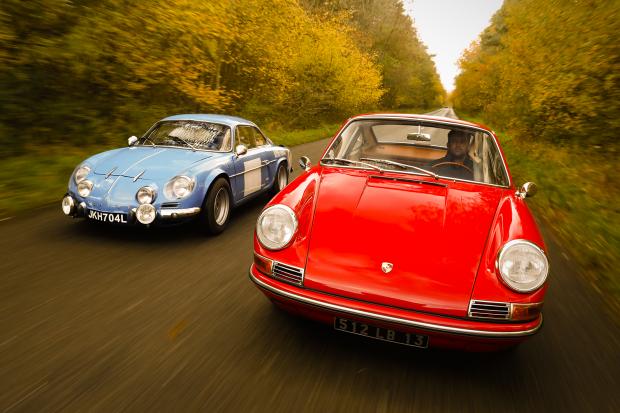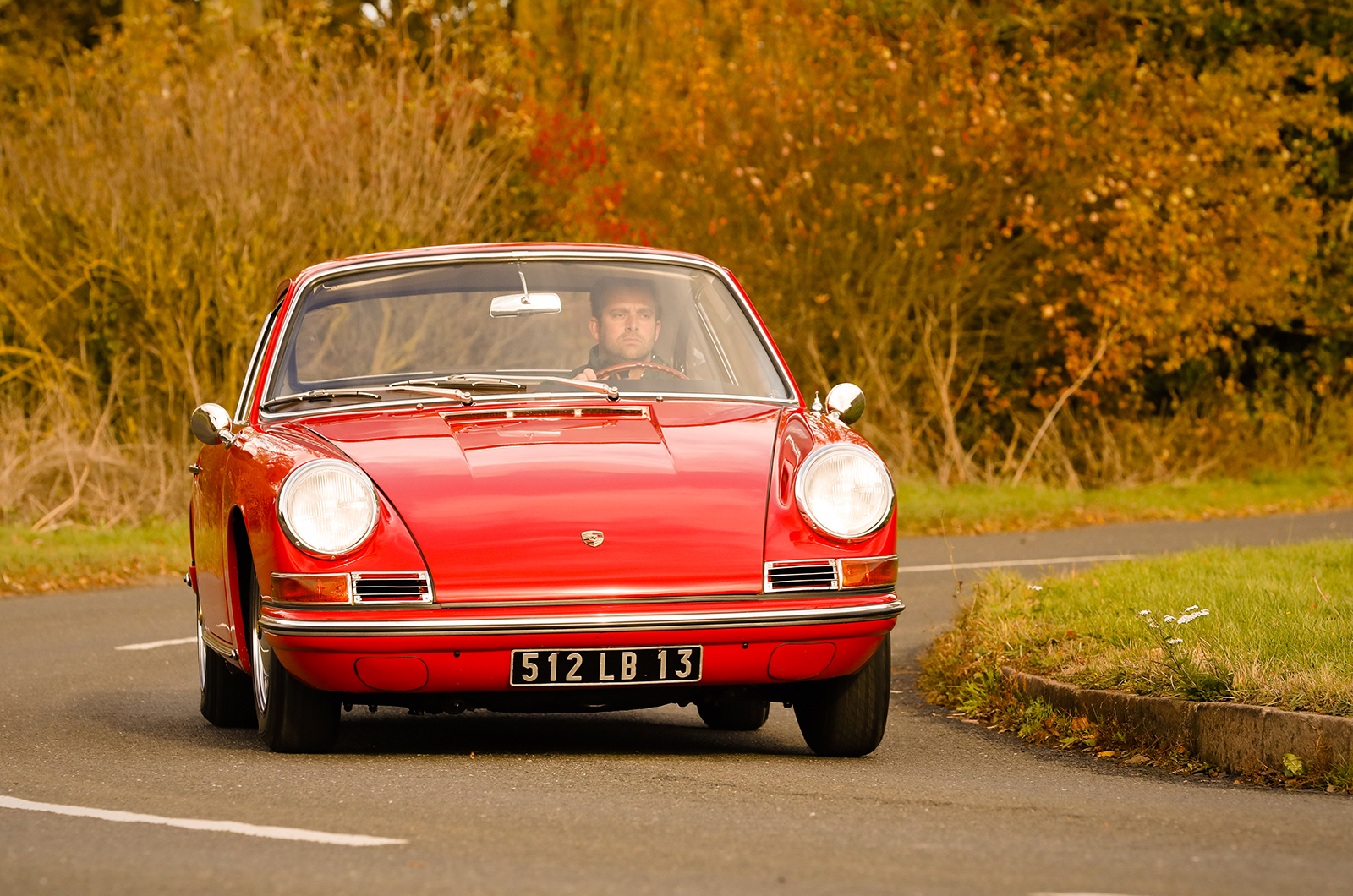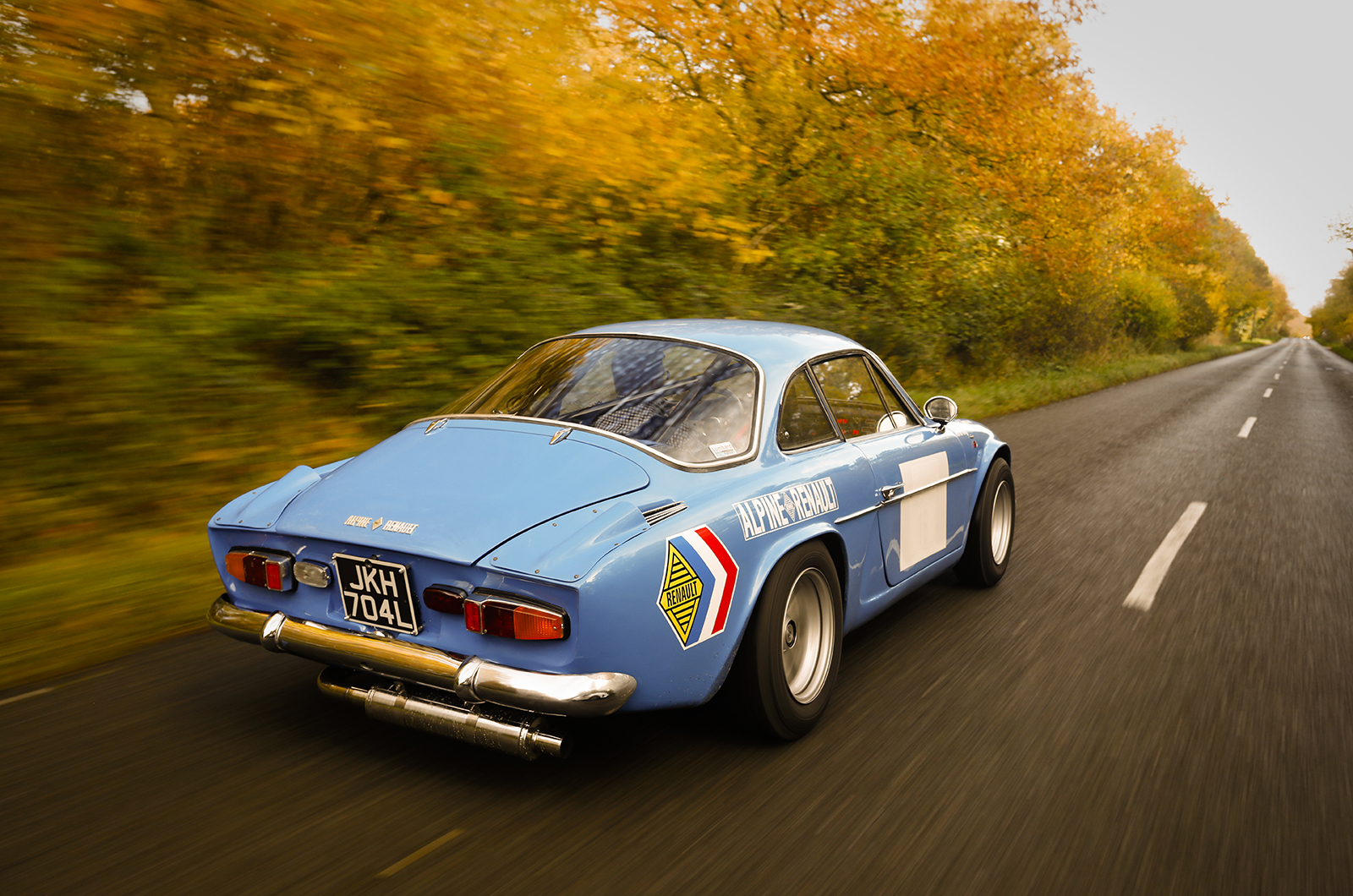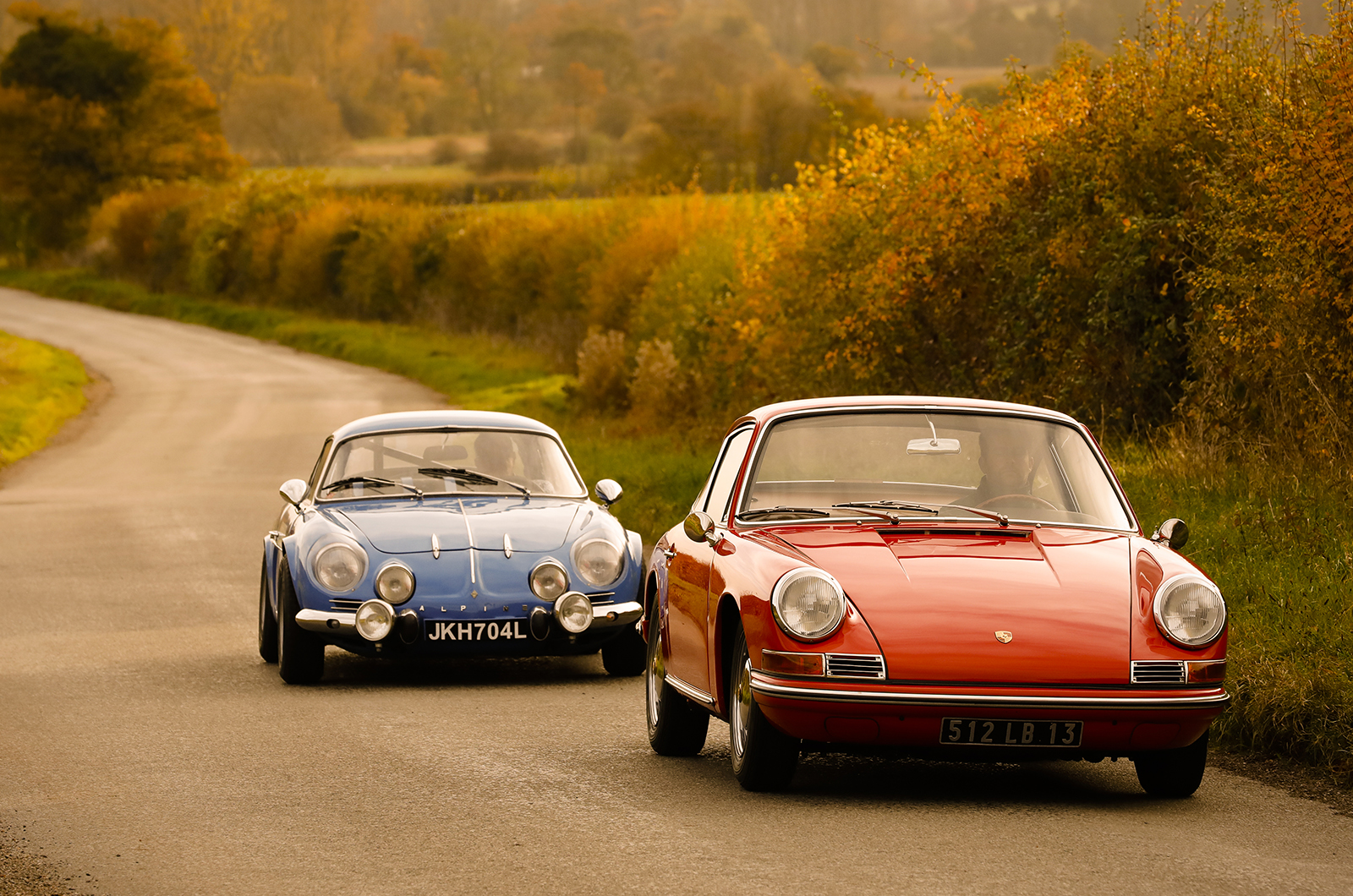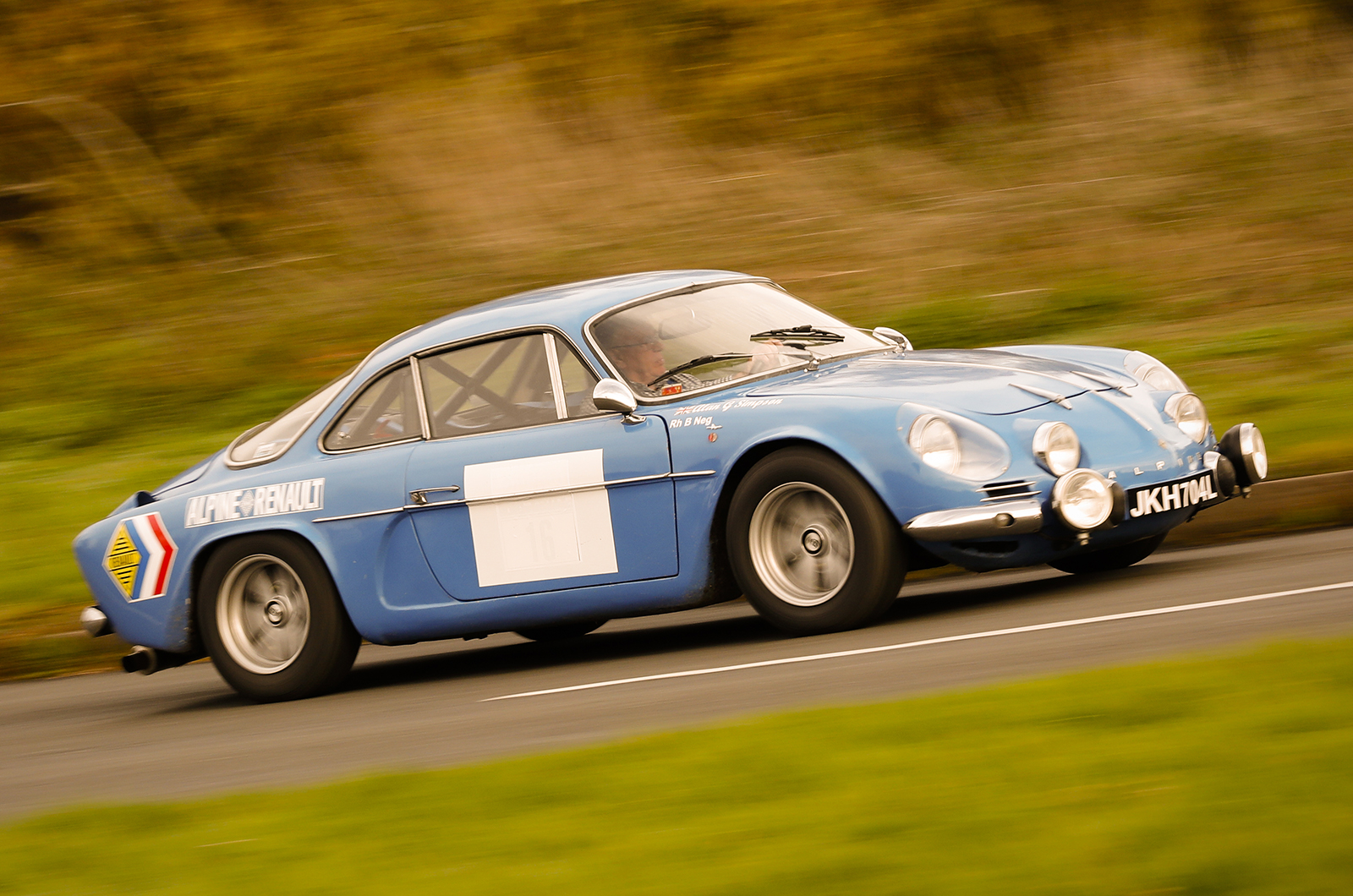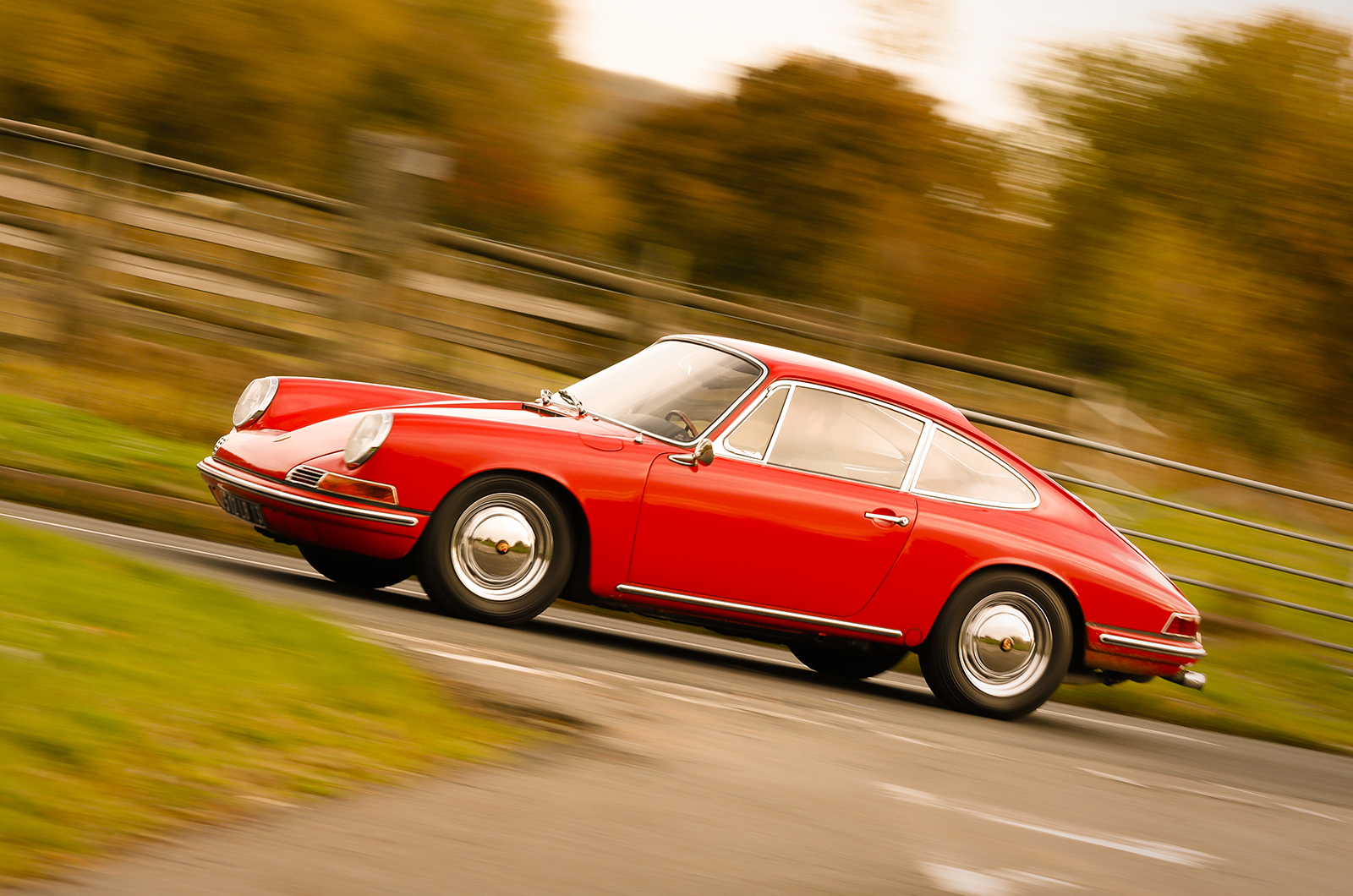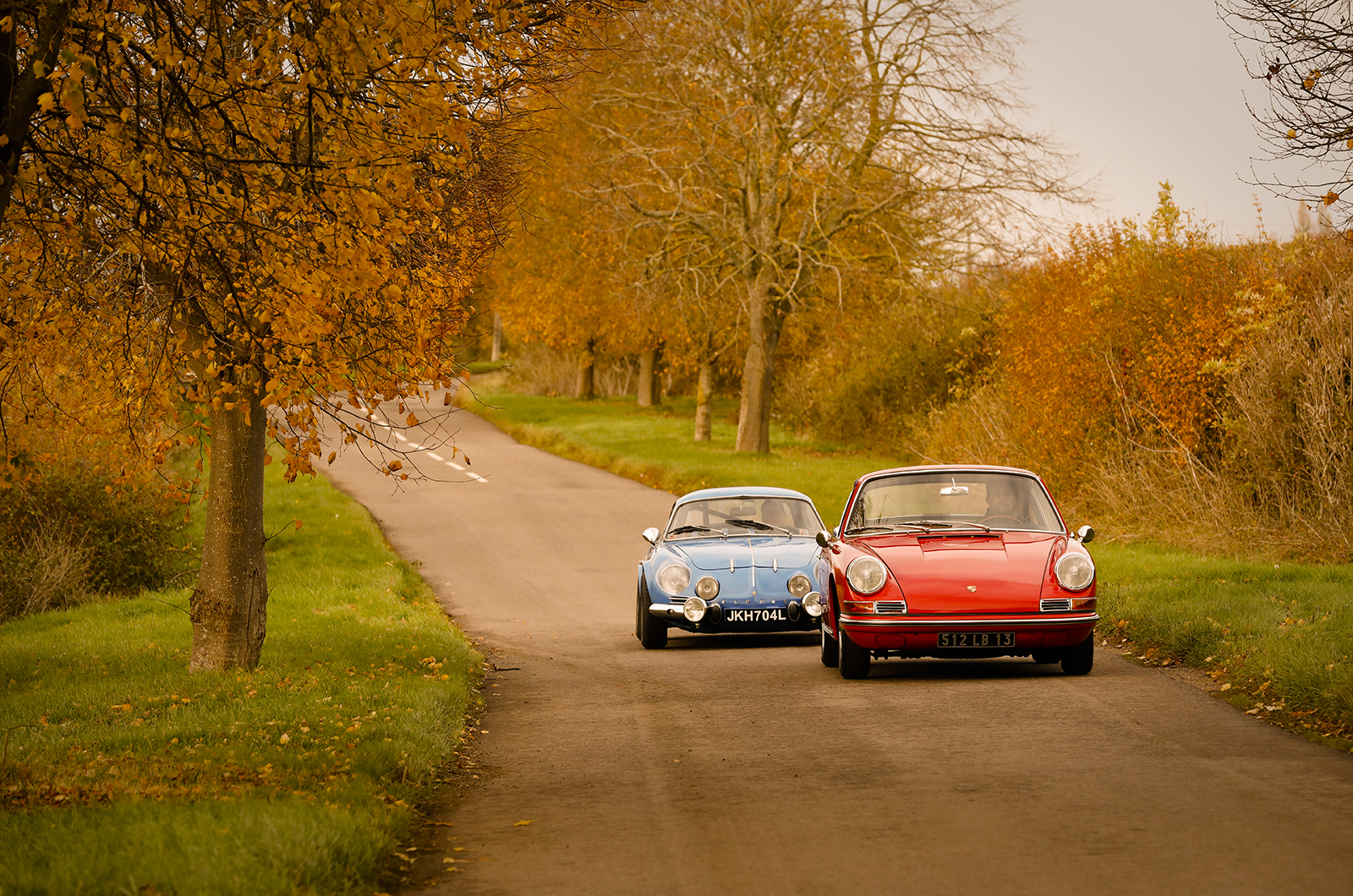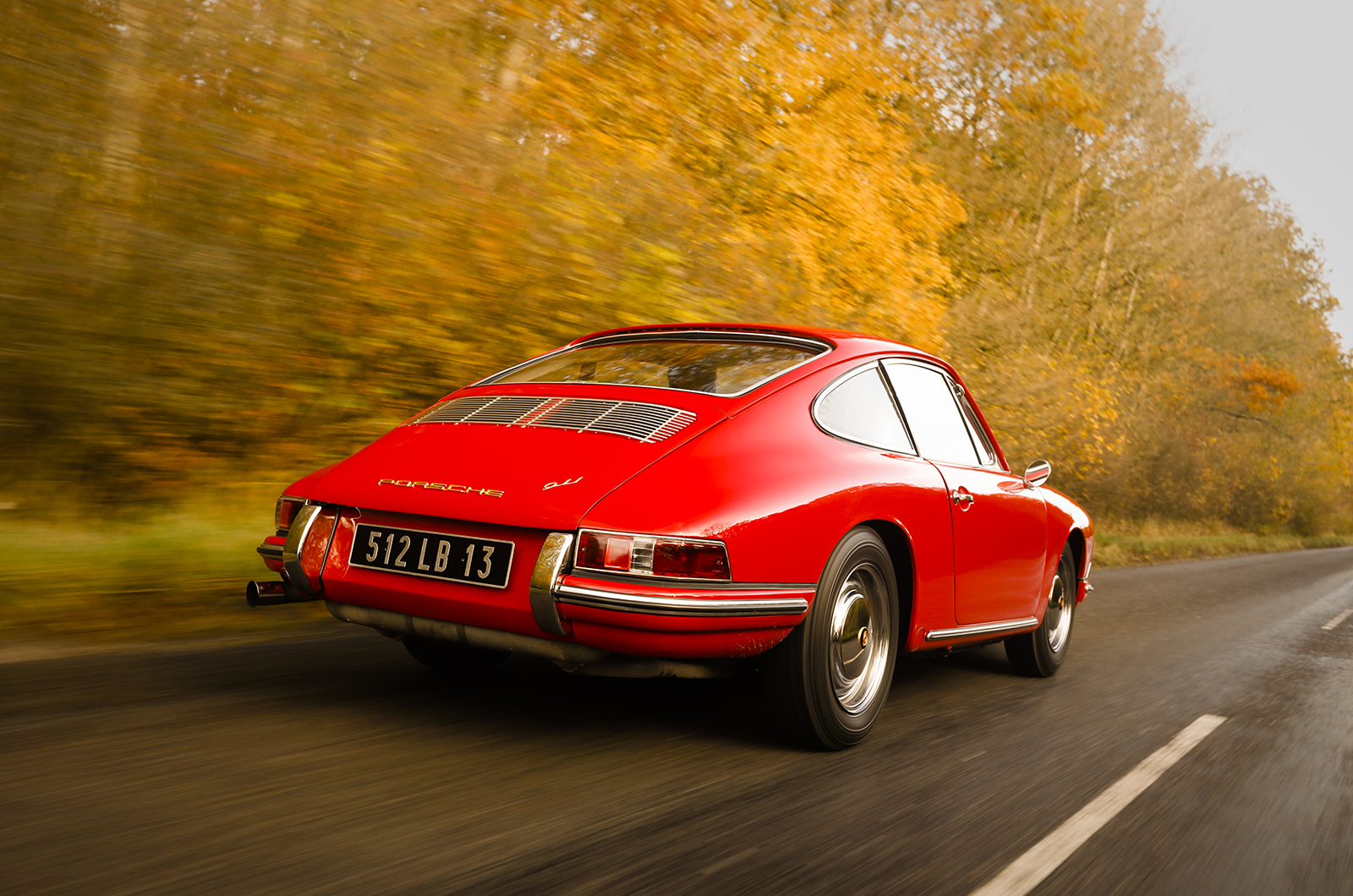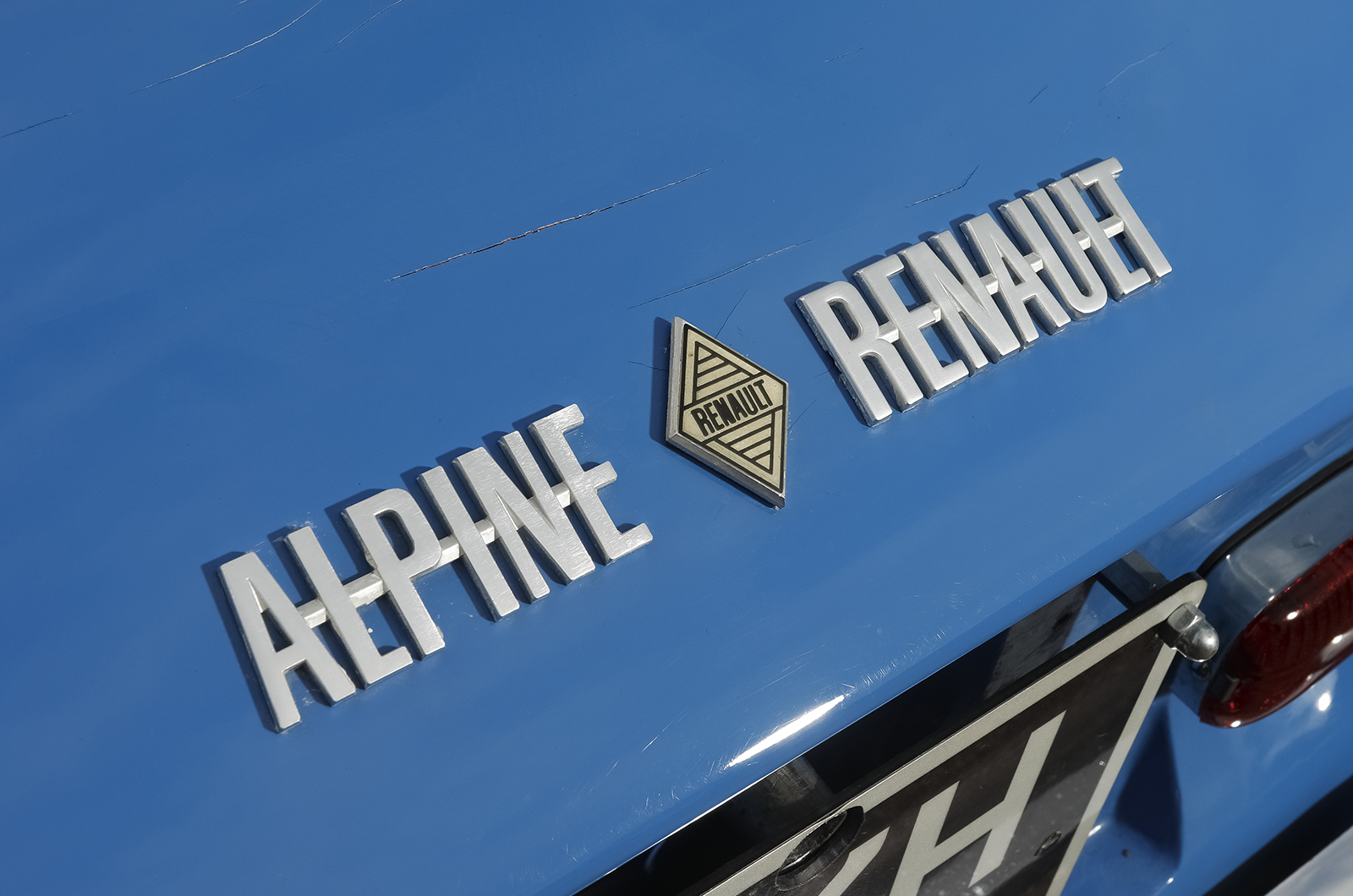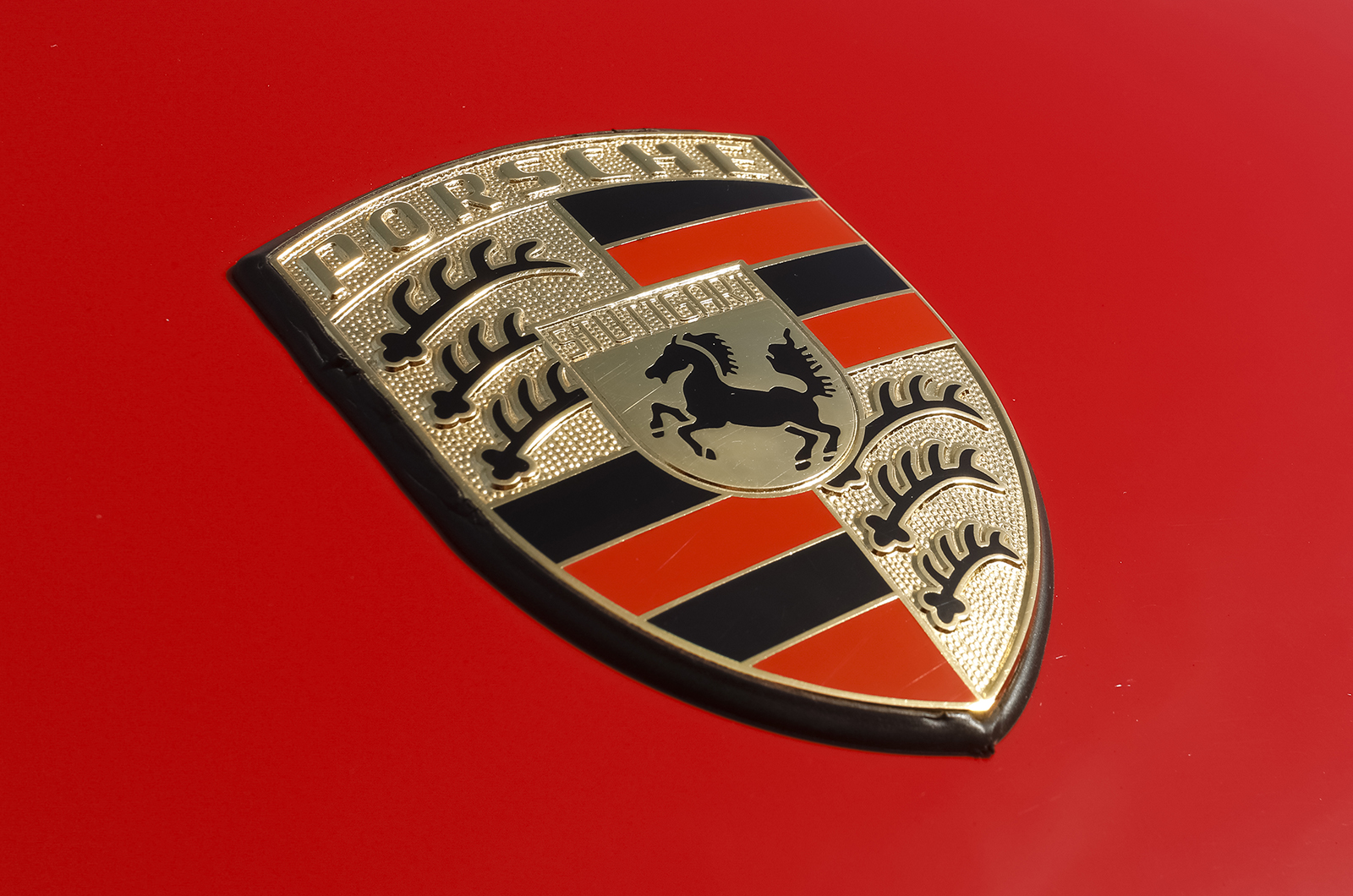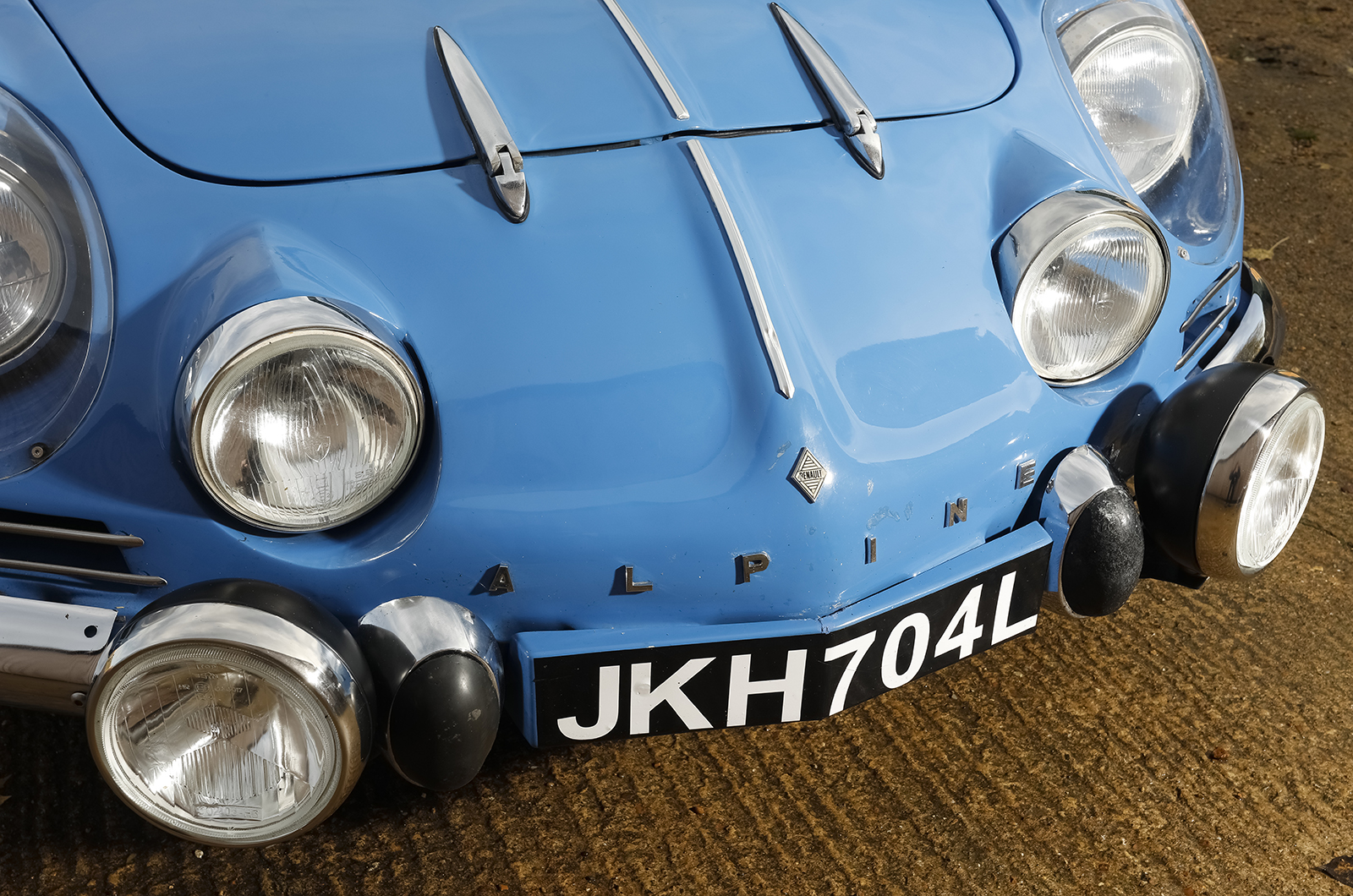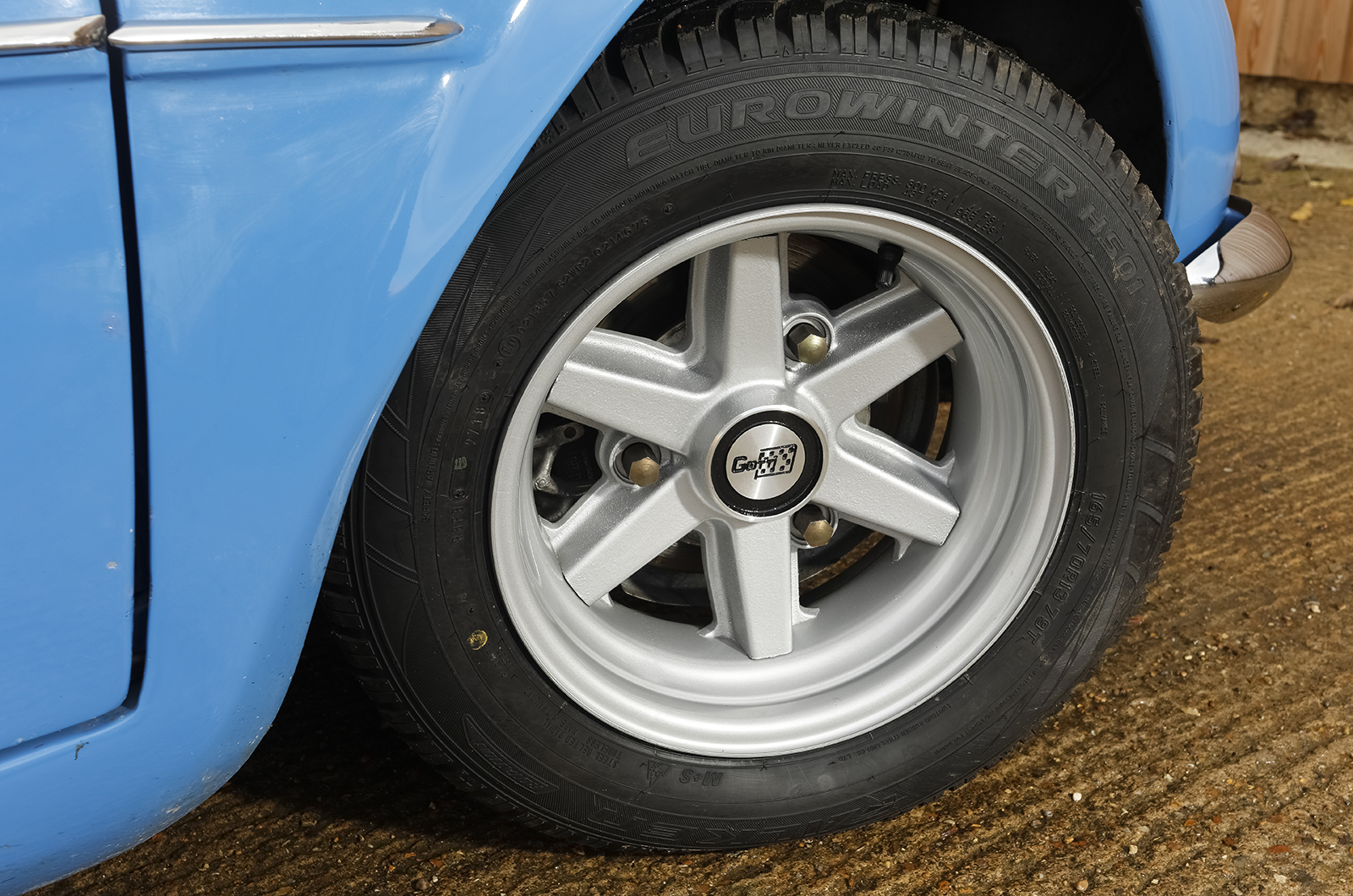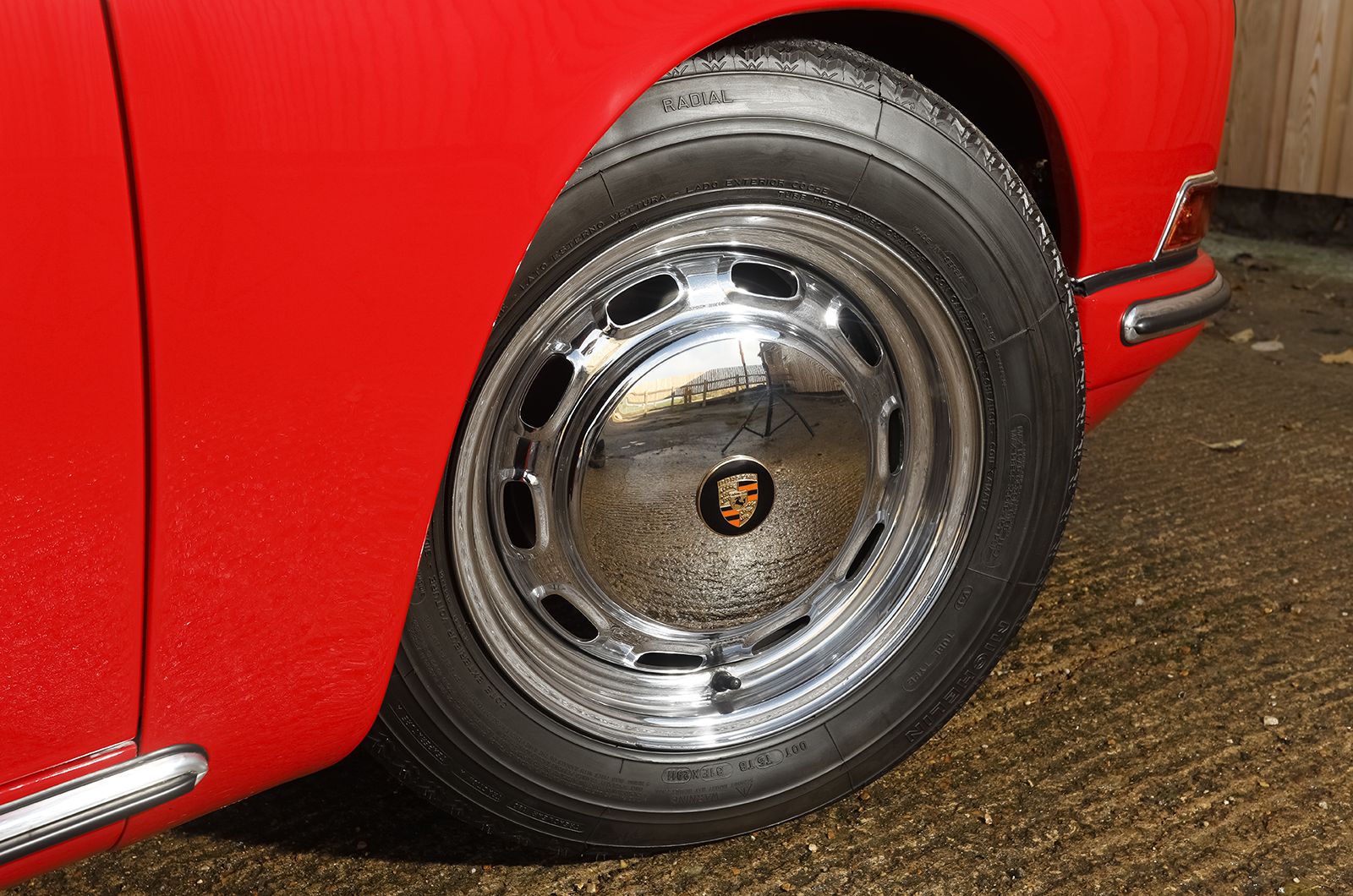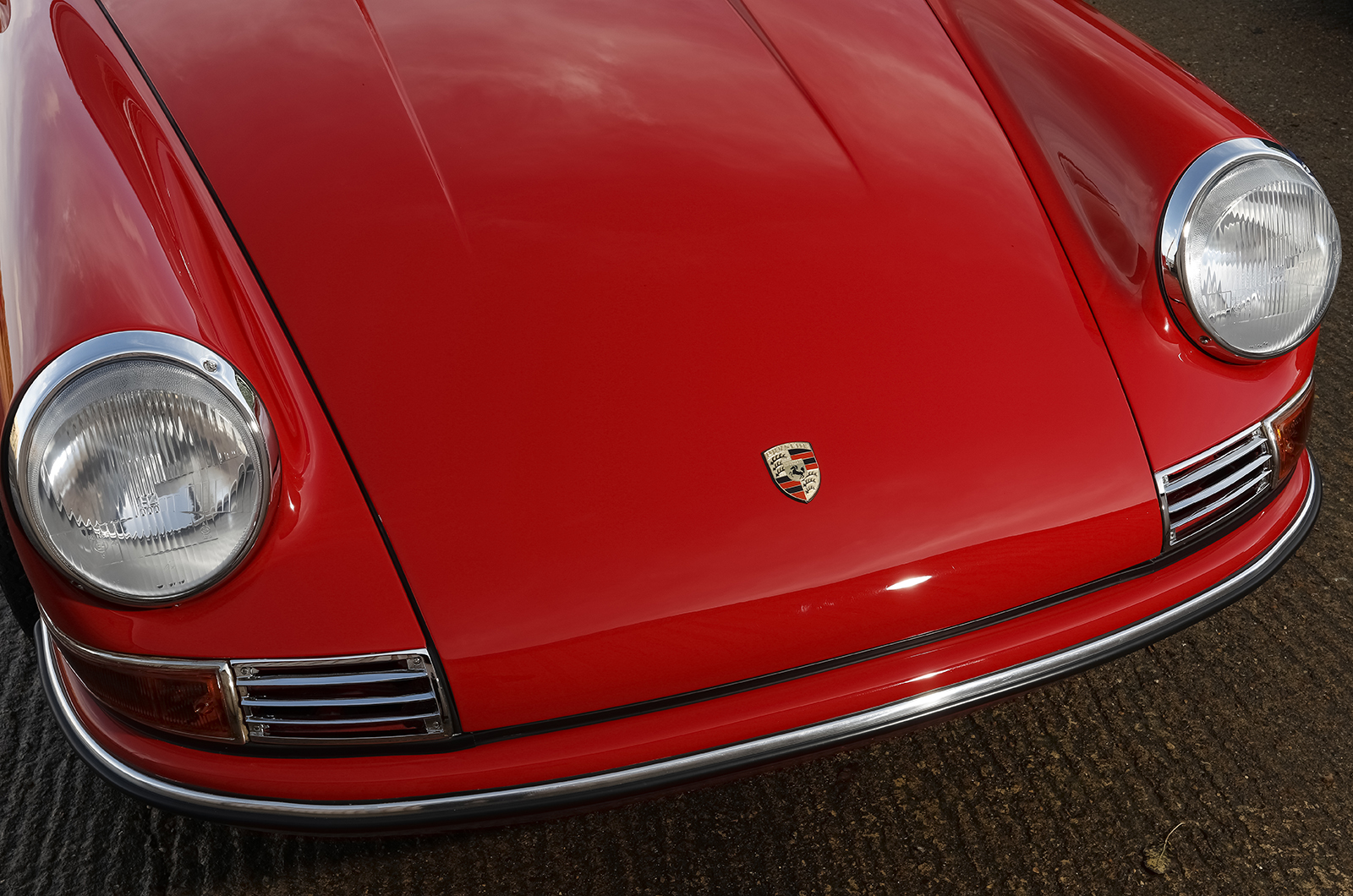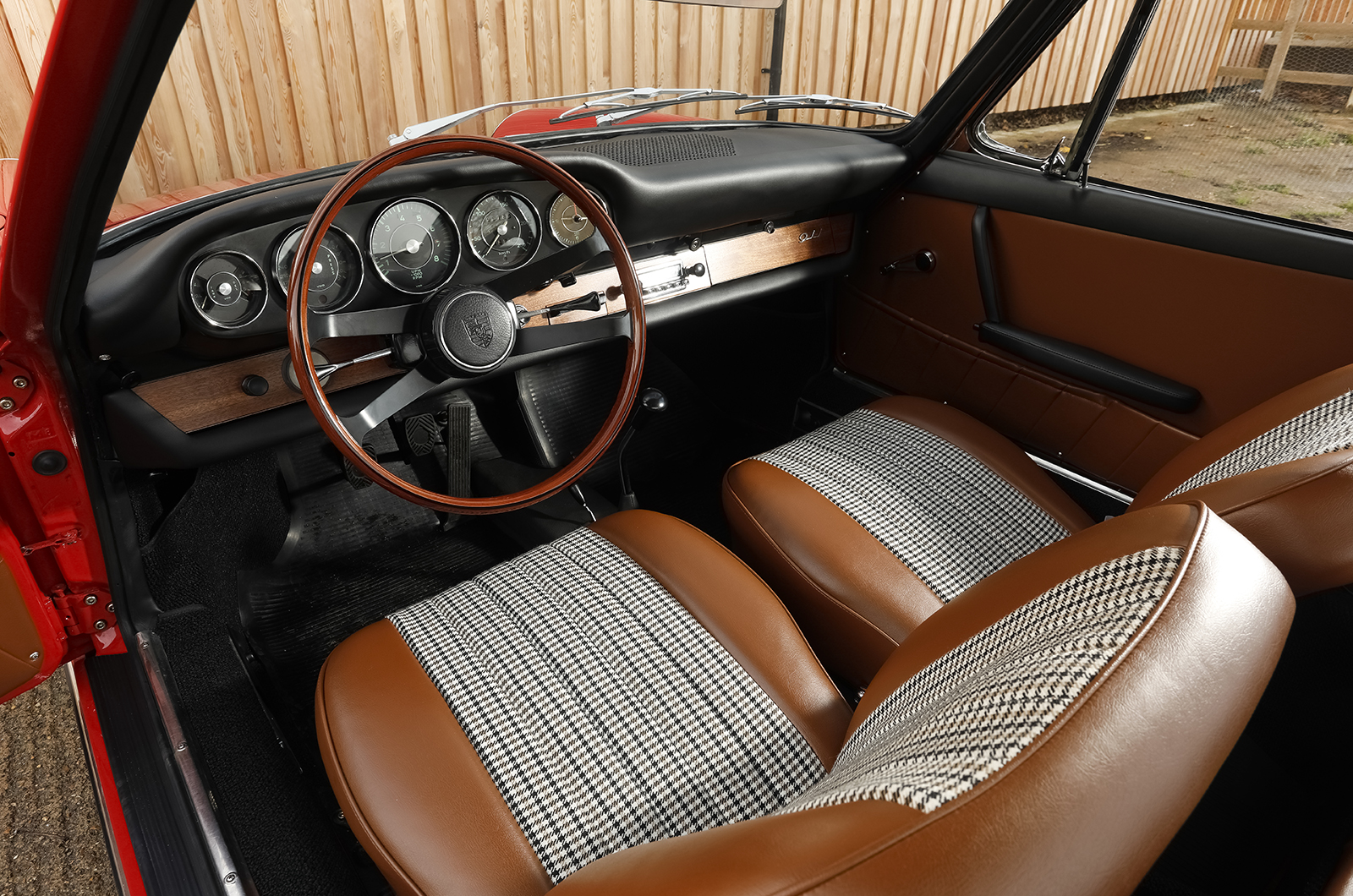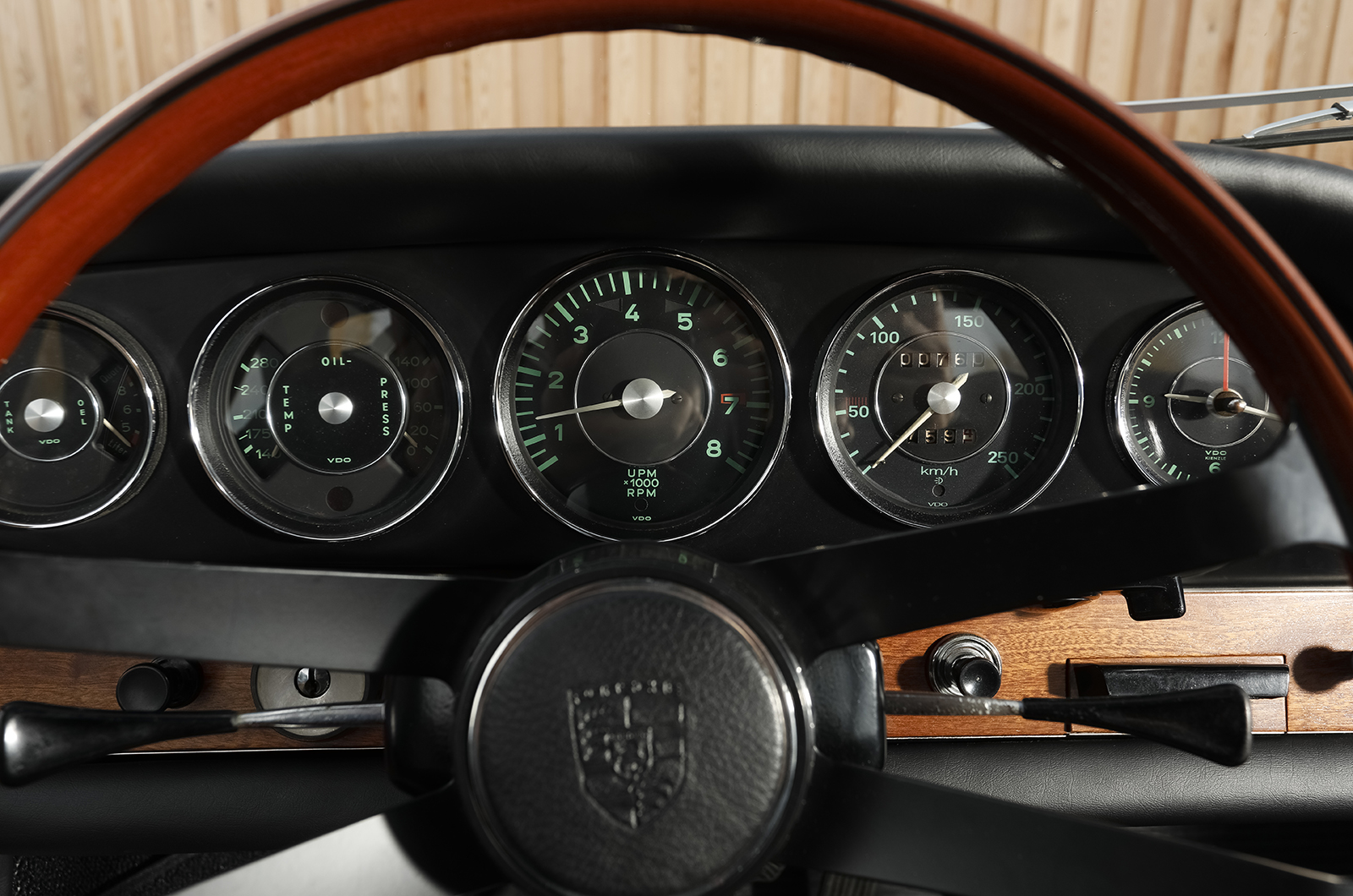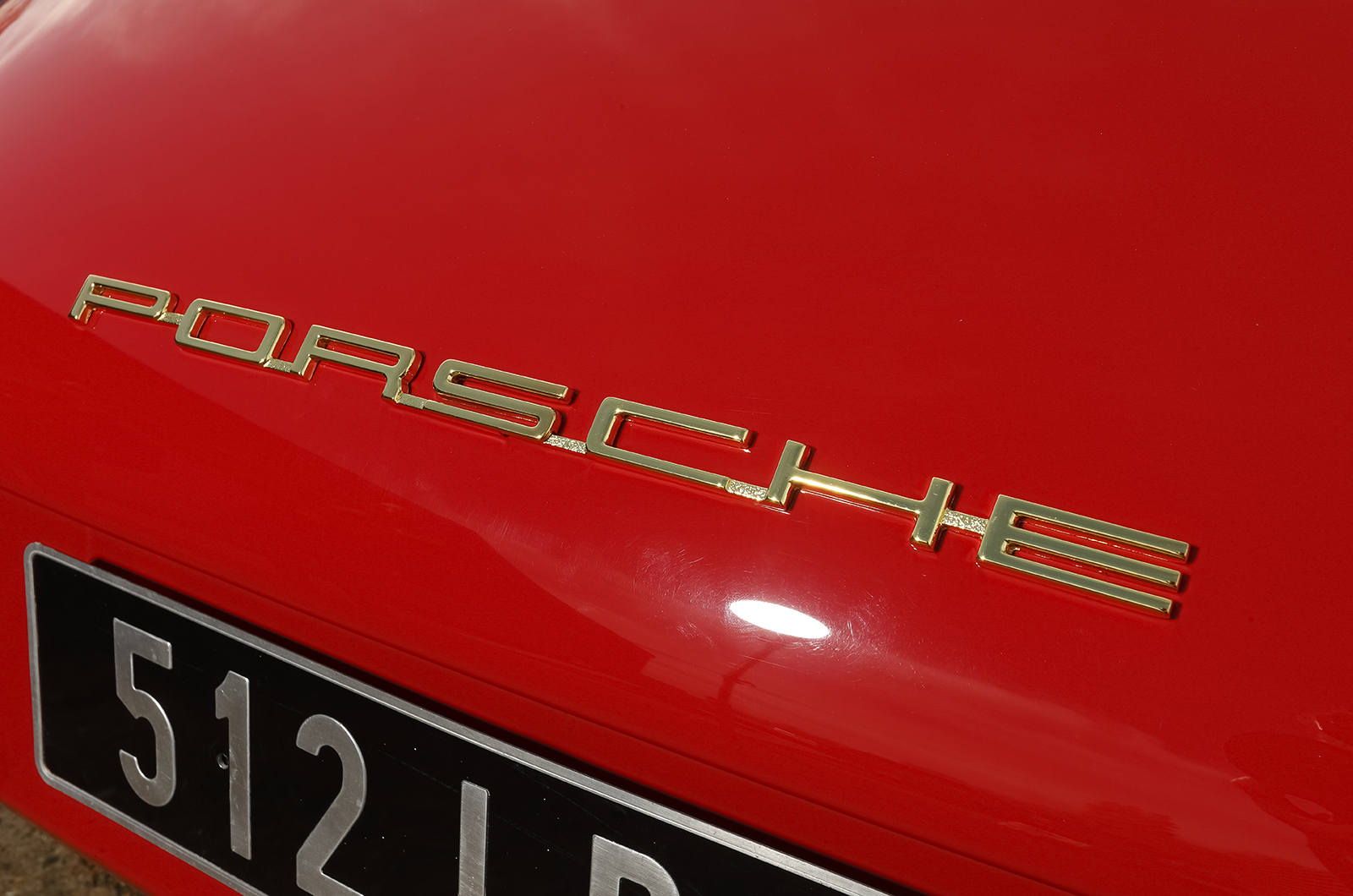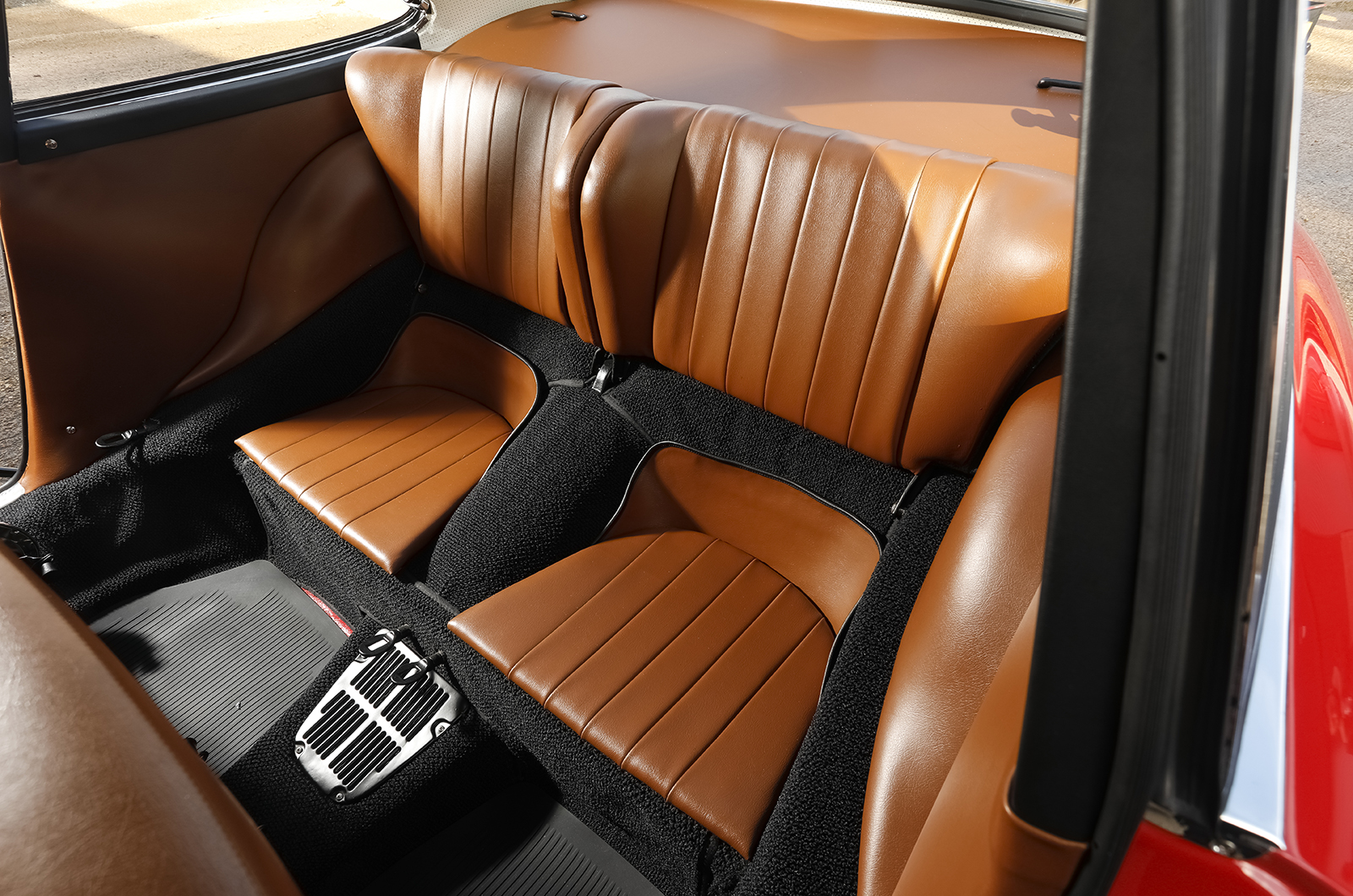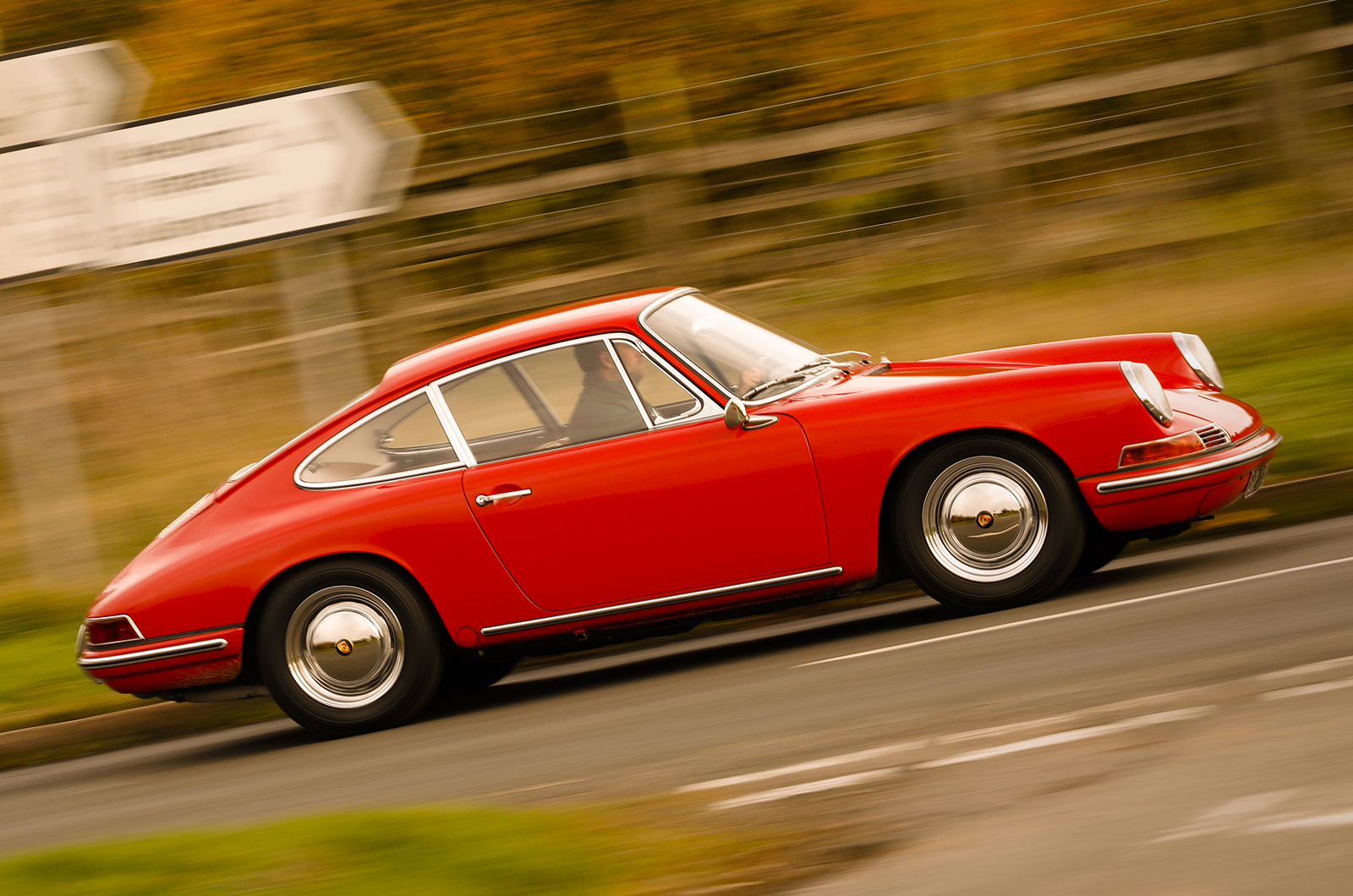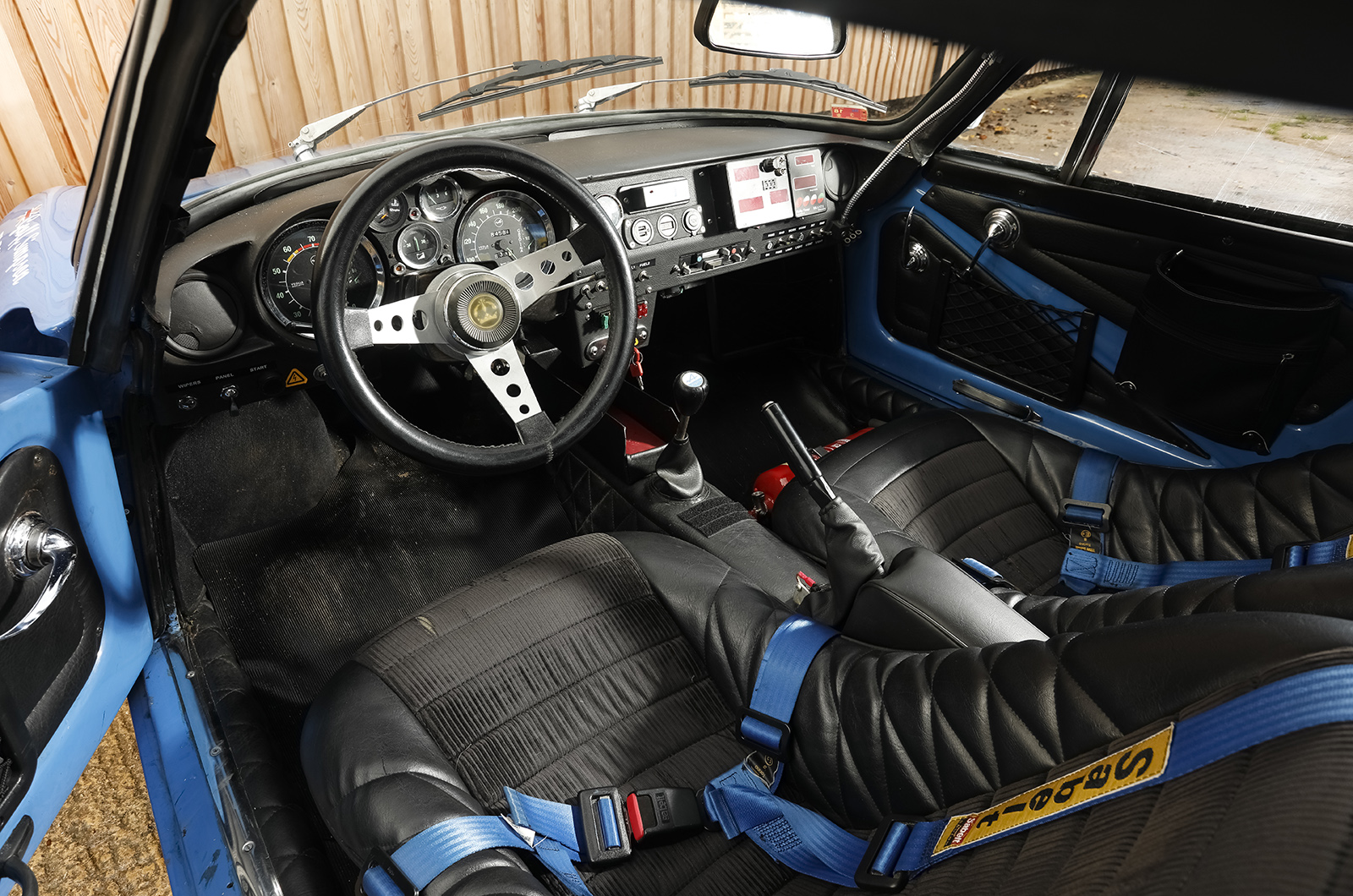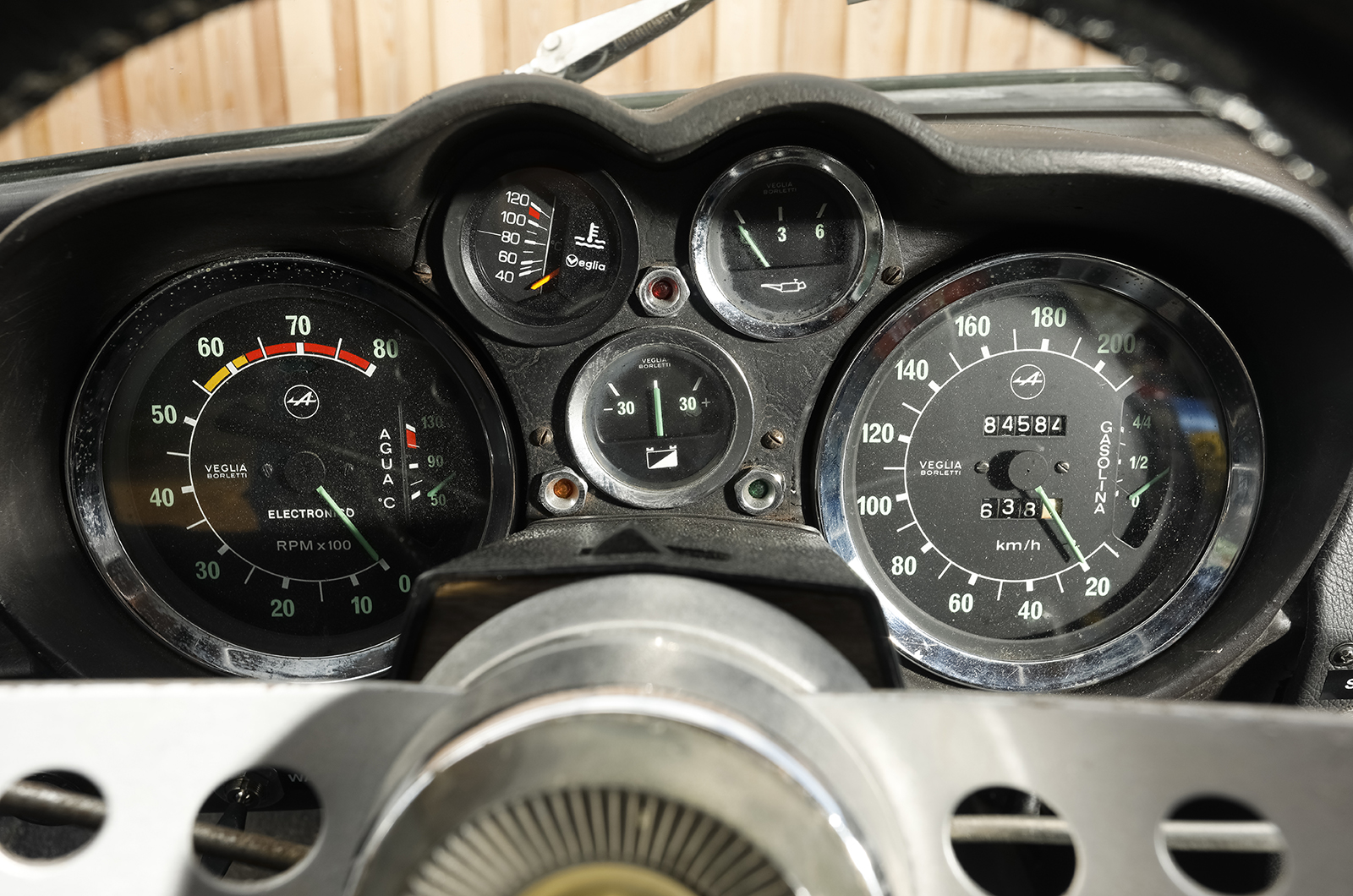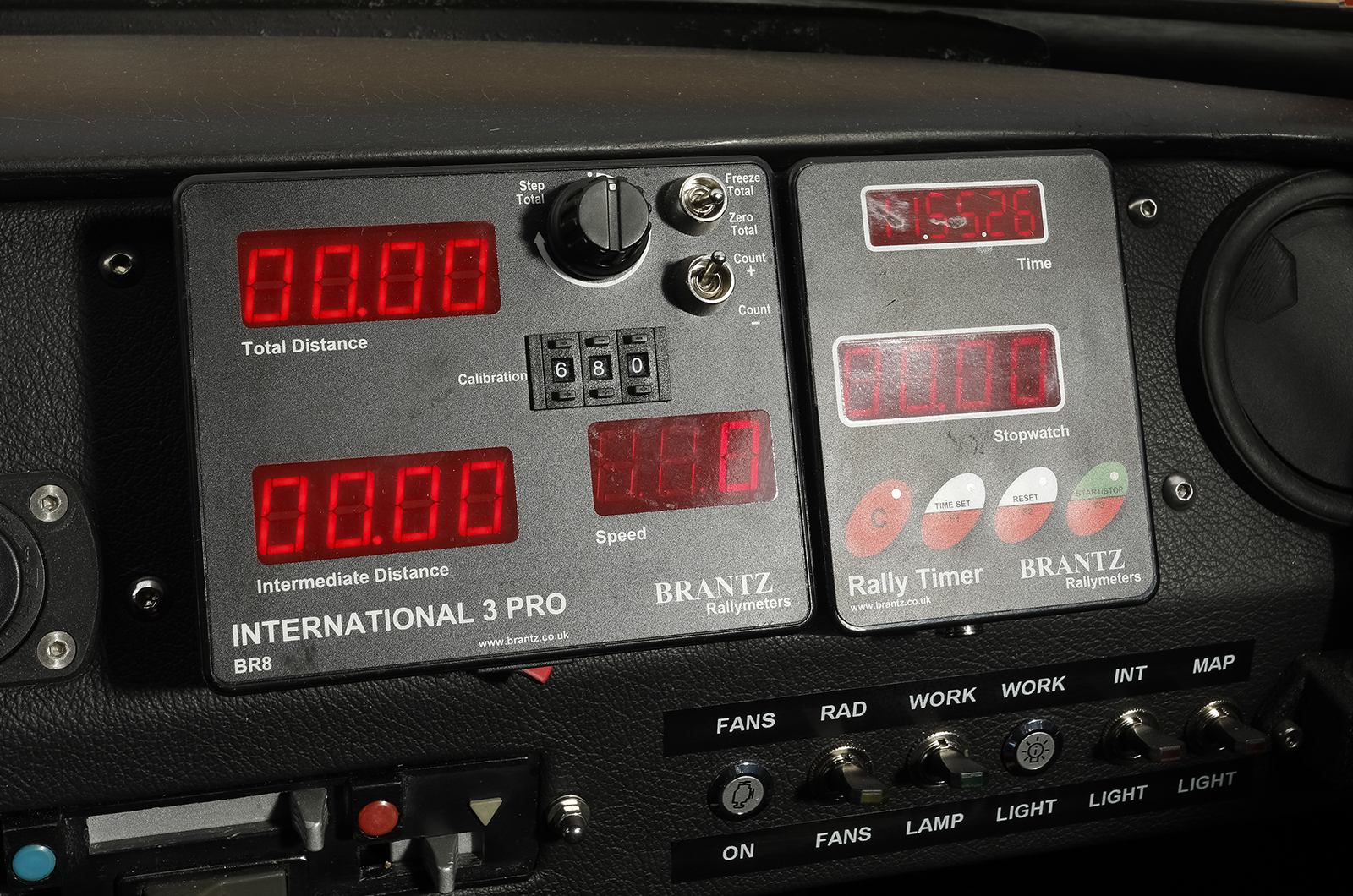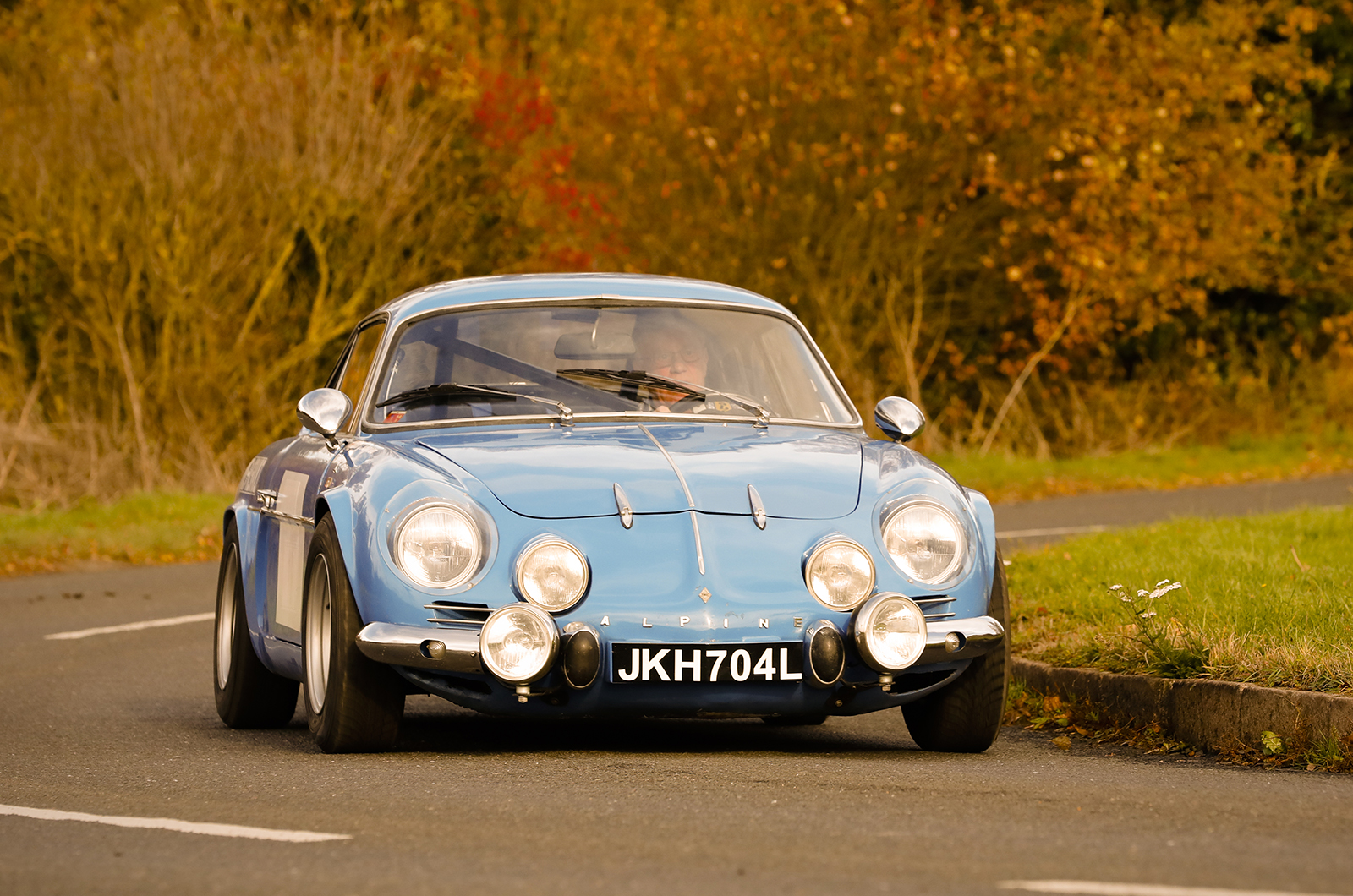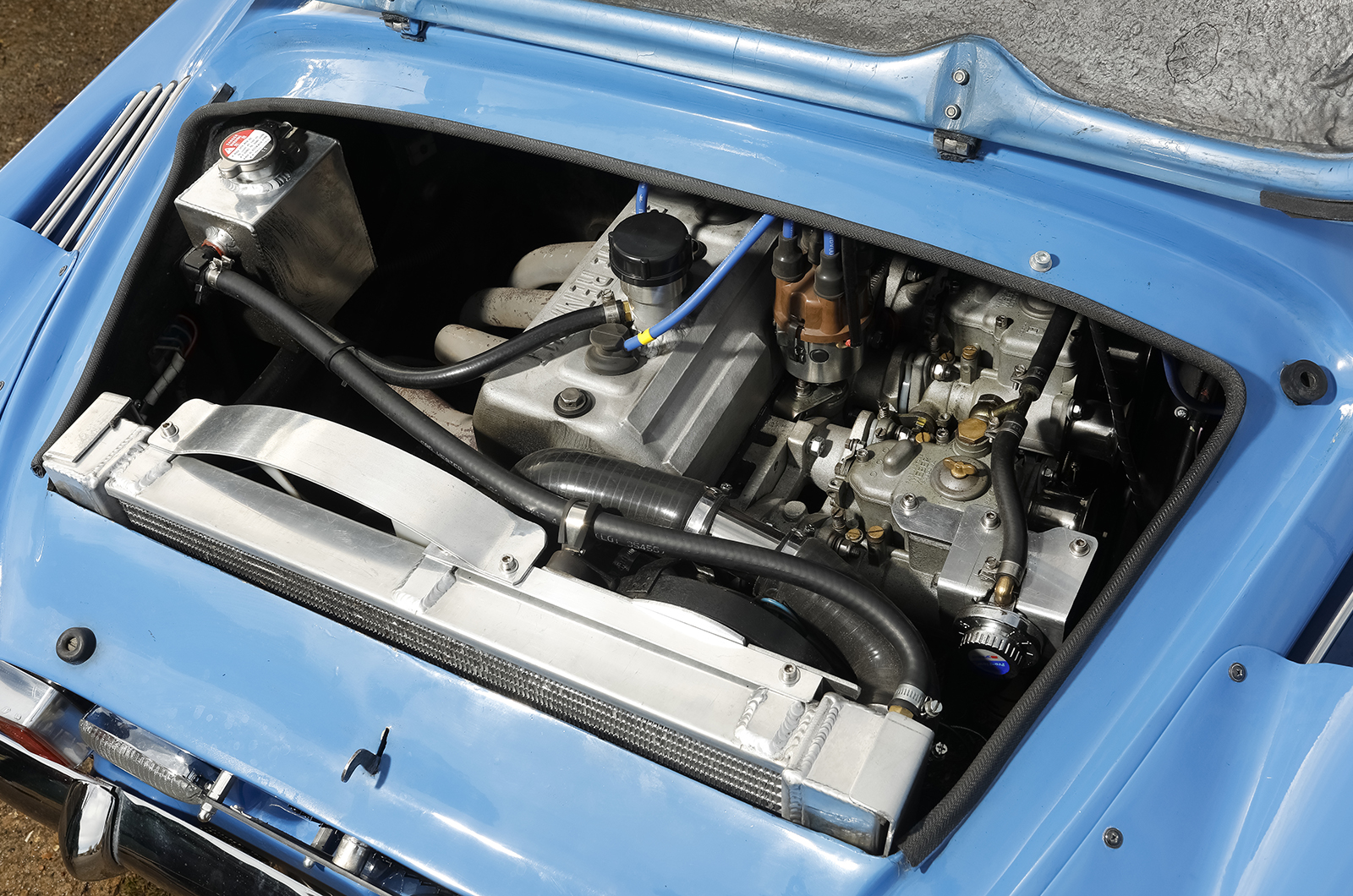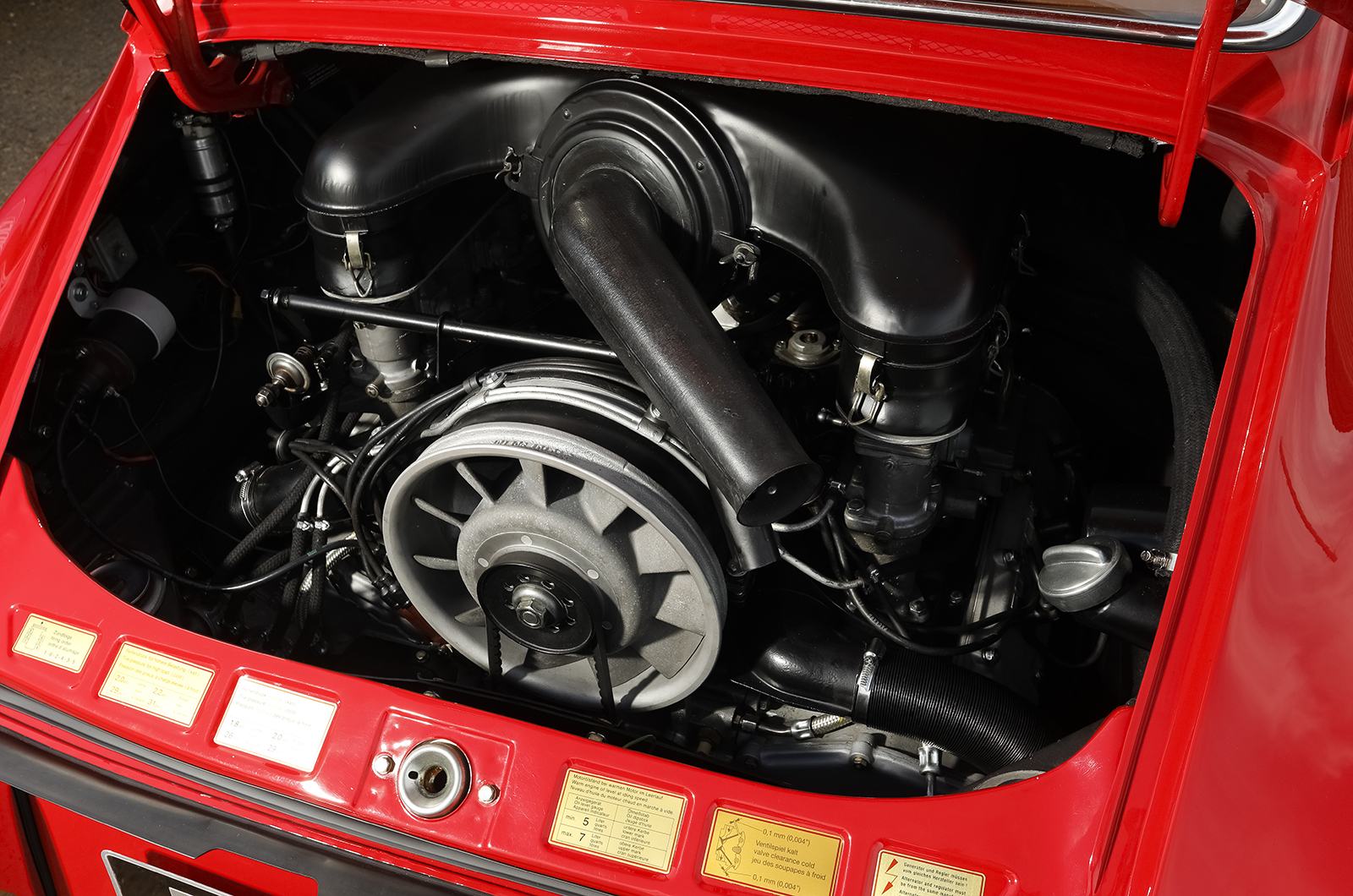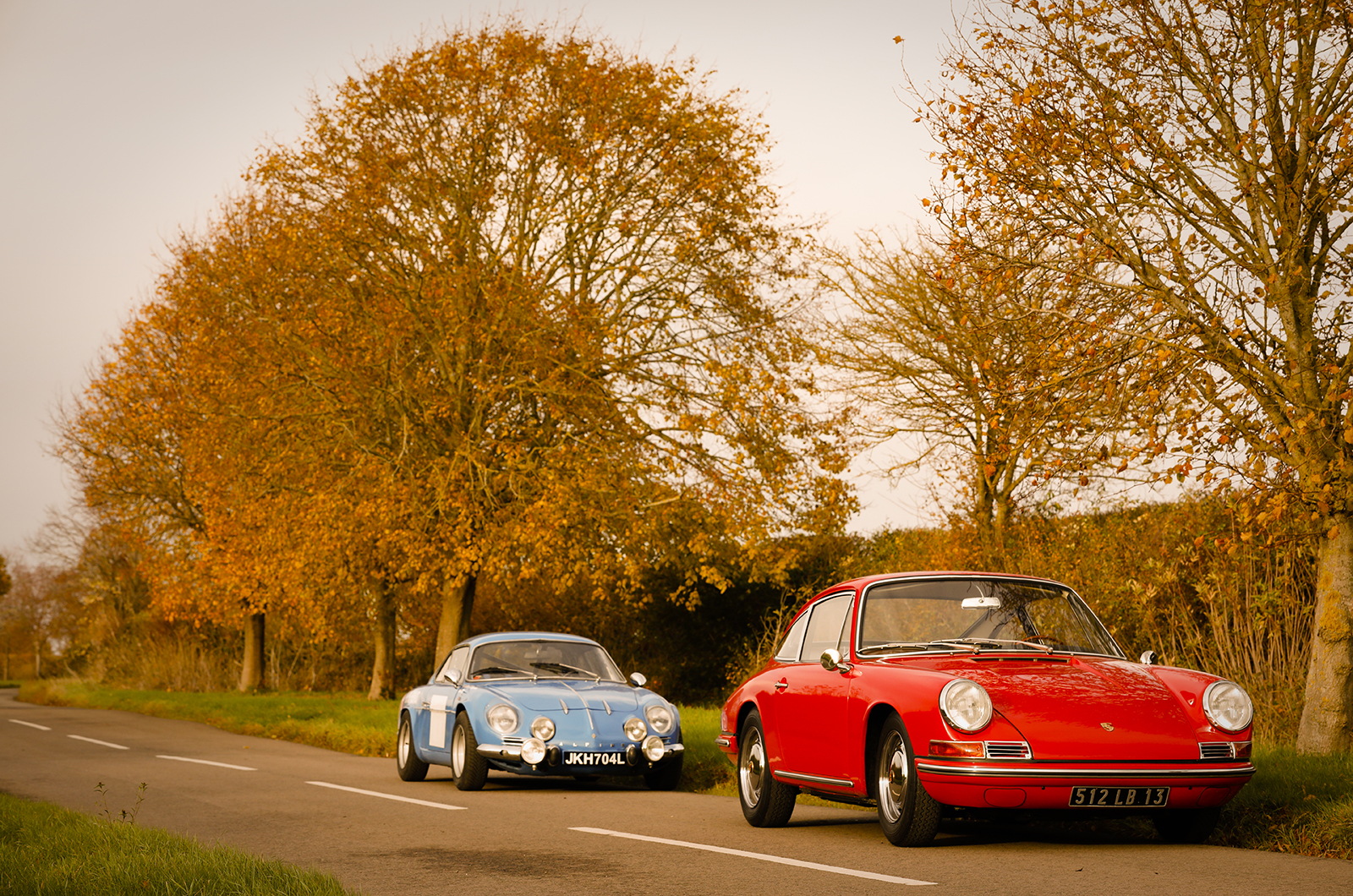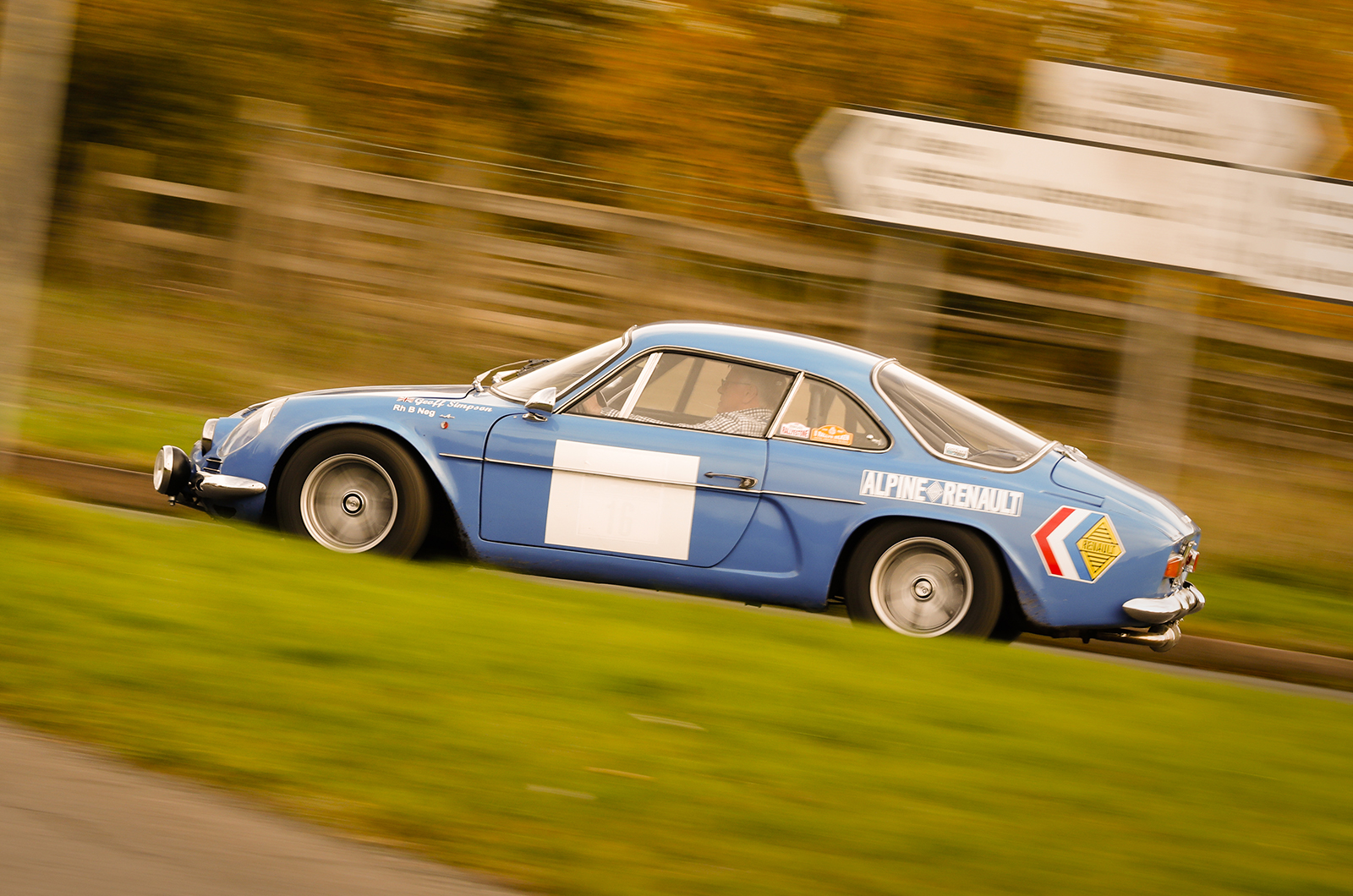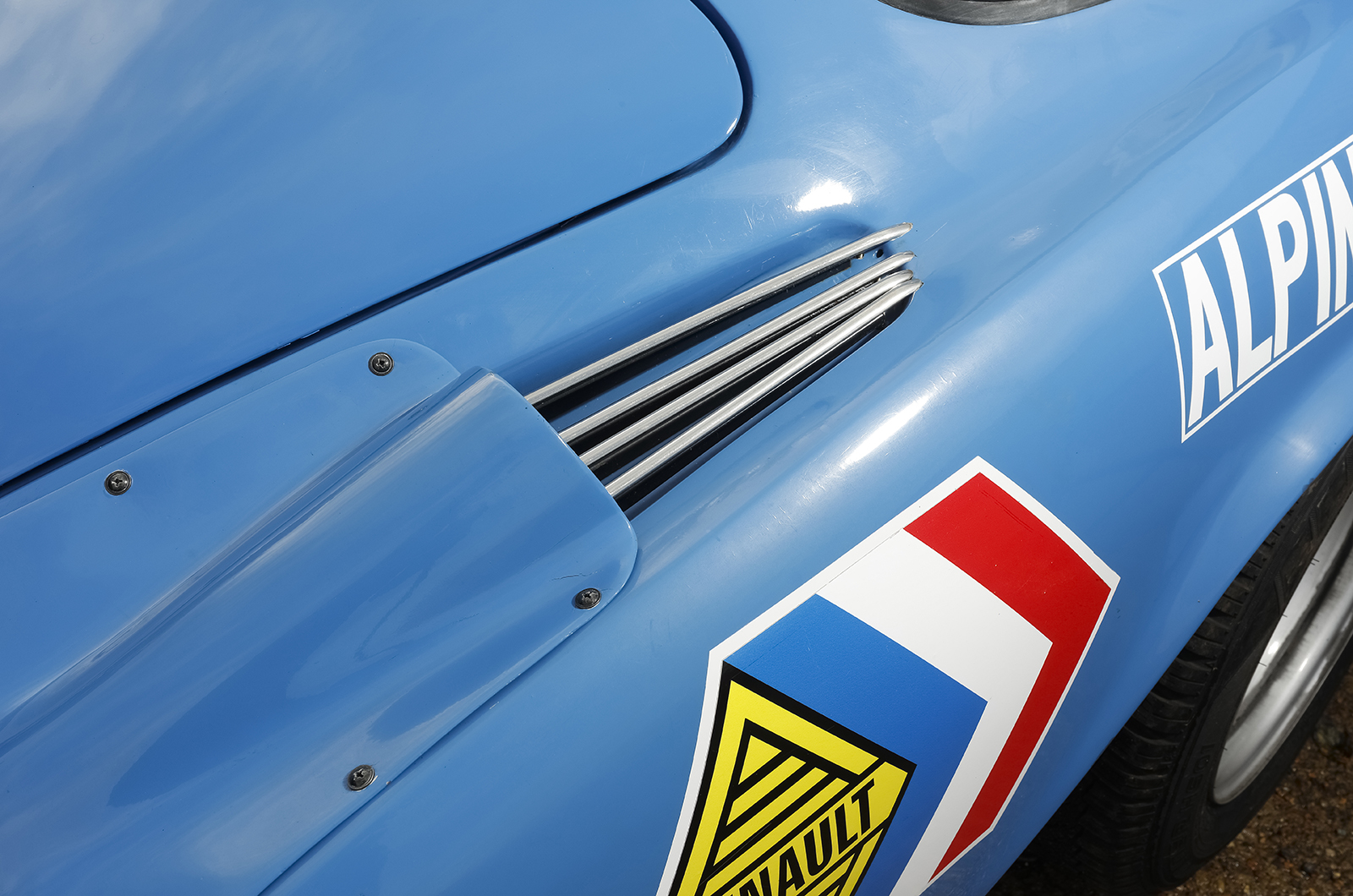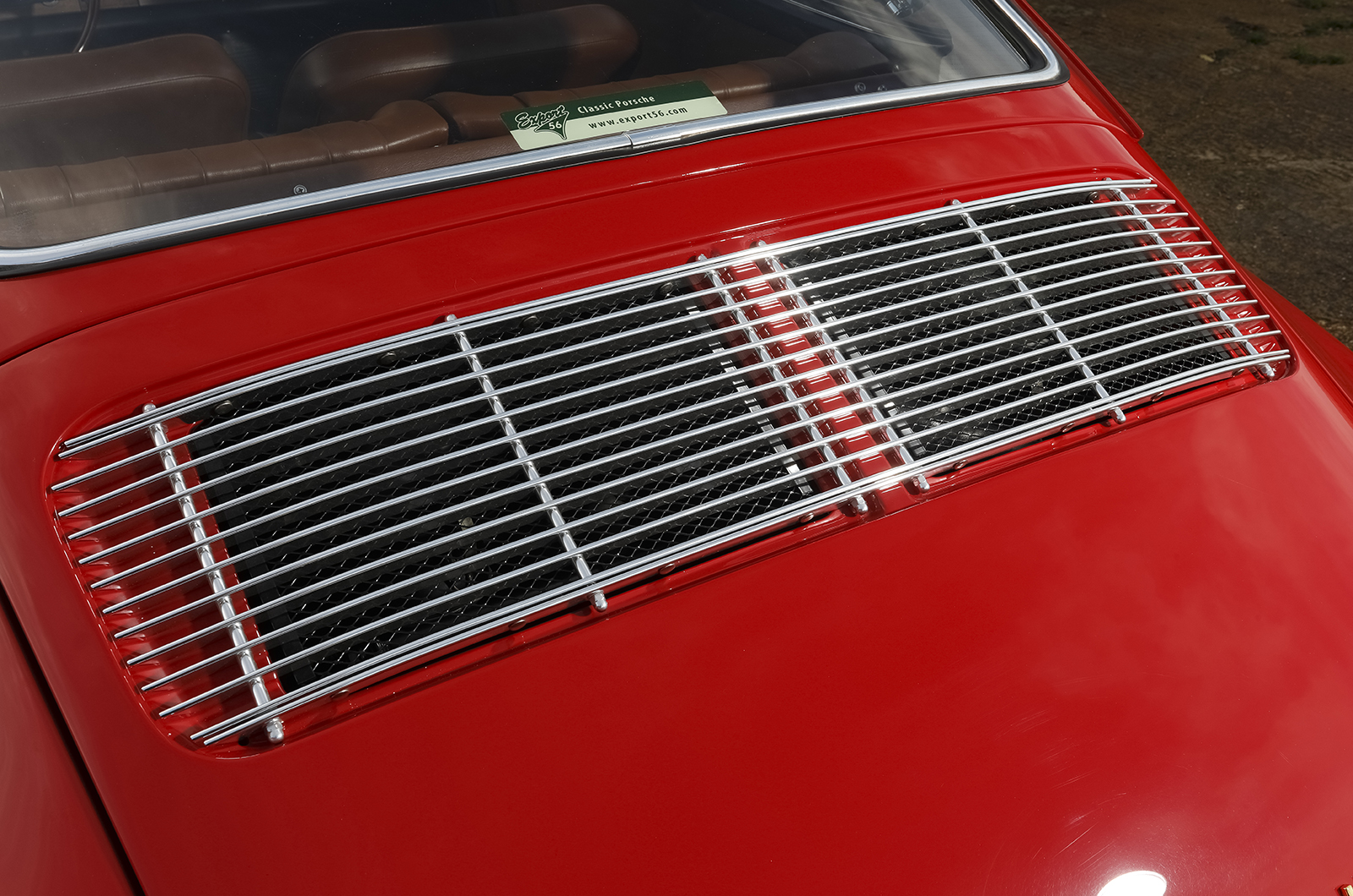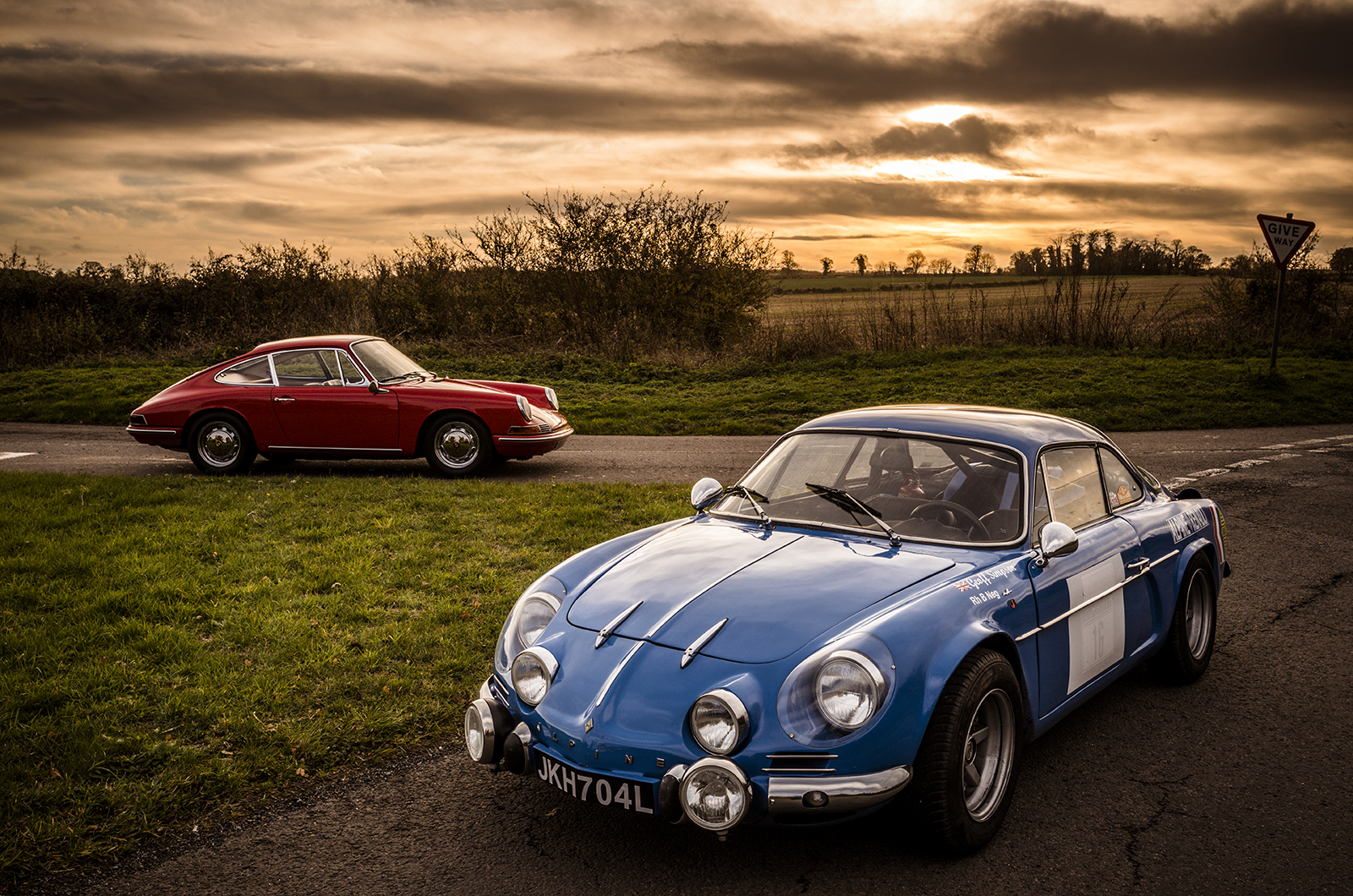The driving position is comfortable where it has no right to be, with both wheel and pedals offset, the latter shunted towards the centre of the car to make room for the wheelarch.
Alpines were built under licence all over the world, with Dinalpins produced in Mexico, Bulgaralpines in Eastern Europe and FASA putting cars together in Spain.
This example is one of the latter, and left the factory with a standard 76bhp 1300 engine, but, as with most A110s, has since been modified.
Early 911s had six Solex carbs, while the A110’s modified engine bay has a Porsche 944 radiator paired with motorcycle electric fans
The most notable – and most exciting – change is the engine, which has been replaced by a 1397cc crossflow unit built by renowned fettler Salv Sacco.
Fed by twin 40DCOE Webers, it promises over 100bhp at the screaming end of the rev range, along with a more aggressive throttle response.
With the master switch on, the little Alpine starts readily, filling the glassfibre shell with a busy engine note before settling to a remarkably relaxed idle – but the hair-trigger accelerator is too tempting not to blip like a teenager waiting at the lights.
Pull away and its slight 695kg weight is immediately apparent, with blistering acceleration that straight away puts it in a class above the torquey but 385kg heavier 911.
Throttle response is instant and the four-speed ’box slick, but no real match for the hot engine that just wants to keep going and going – Simpson’s next modification is a five-speeder that’s currently winging its way from Scotland, and should transform the car.
Even at the same speed the Alpine feels the quicker of the two, partly due to its size and low ride height, but also the theatre that accompanies each blast up the rev range.
It has swing-axle rear suspension, but the Alpine’s roadholding is fantastic
It’s an addictive experience only enhanced by the A110’s roadholding, which is nothing short of remarkable for a car with a comparatively archaic swing-axle arrangement at the rear.
It, too, carries its timber over the back wheels, but the lower centre of gravity and wide track help tame the tail, which offers bags of confidence-inspiring feedback.
Feeding the tiny sports car along the country lanes of Newport Pagnell, it’s easy to see how Alpine toppled the mighty 911 from its rallying perch, becoming the go-to loose-surface and Tarmac weapon before the arrival of the all-conquering Lancia Stratos.
The A110 and 911 – the same, but different
Jean Rédélé and Ferry Porsche each took the thick end of 20 years to achieve their goals, with the final outcome similar in some respects and very different in others – like twins with wildly differing personalities.
Which is the evil one depends very much on your idea of the perfect sports car, whether that is the effortless chic and engineering prowess of the Porsche 911, or the Alpine’s quest for total performance from the most humble of beginnings.
Both triumphed for a time on the world’s rally stages, but only the Porsche became a commercial success.
Crucially, this allowed it to develop as a road car and, where the A110 remained true to Rédélé’s vision, the pure ‘901’ quickly gave way to bigger engines, swollen arches and supercar performance.
By the time the detuned, last-of-the-line Alpine A110 1600 SX left the factory in 1977, the 911 had grown into a whale-tailed, turbocharged 3.3-litre road-burner putting out more than 300bhp.
It might have been fleeting, but there was a time when Alpine was king.
Images: Tony Baker
Thanks to: Export 56; Stephen Dell; Tim Moores; Renault Alpine Owners’ Club; Club Alpine Renault
BUY A CLASSIC PORSCHE 911
View all Porsche 911 classic cars for sale in our classified listings
READ MORE
Future classic: Alpine A110
Buyer’s guide: Porsche Boxster 986
Robert Redford’s racing Porsche could be yours
Greg MacLeman
Greg MacLeman is a contributor to and former Features Editor of Classic & Sports Car, and drives a restored and uprated 1974 Triumph 2500TC
